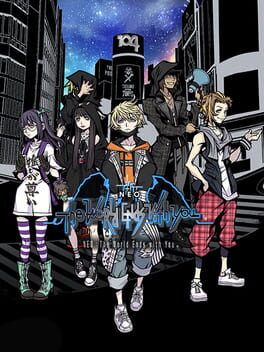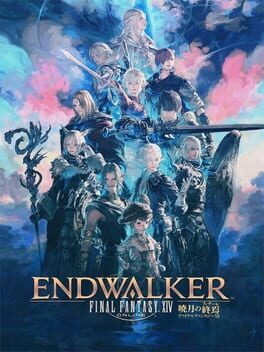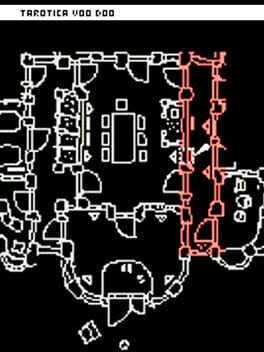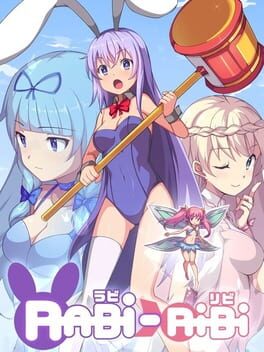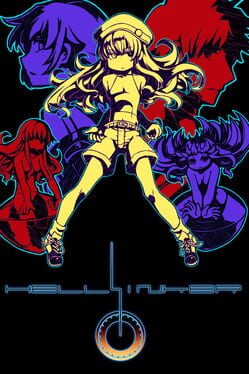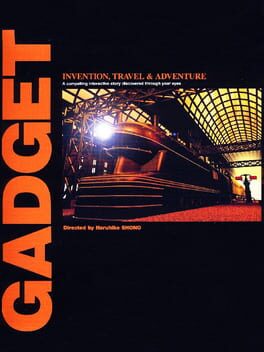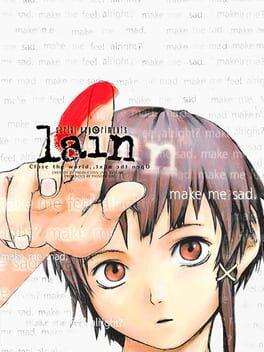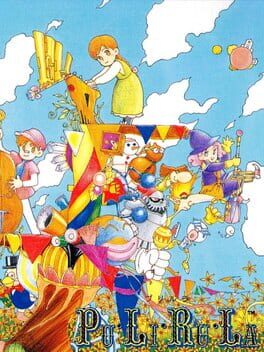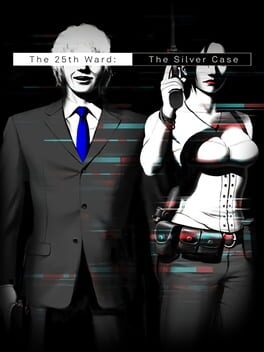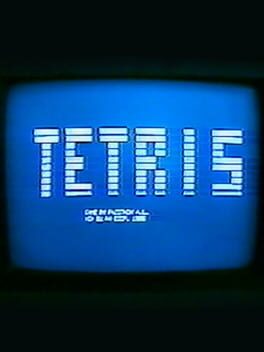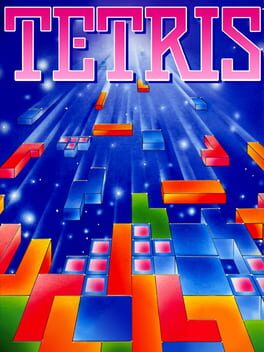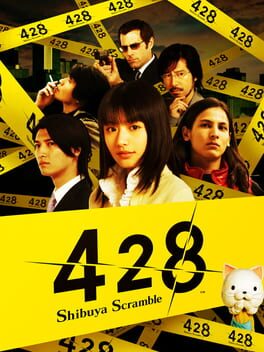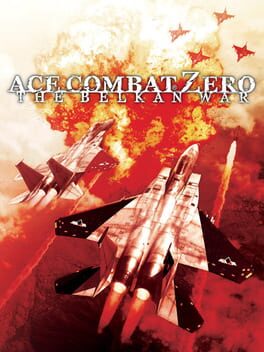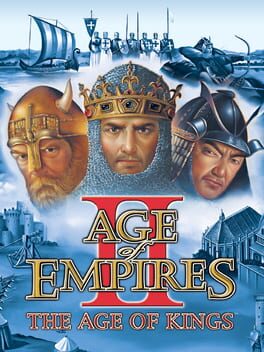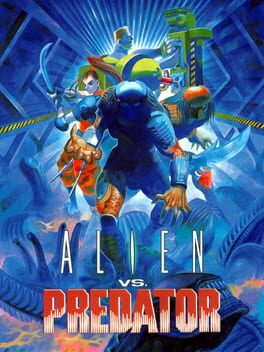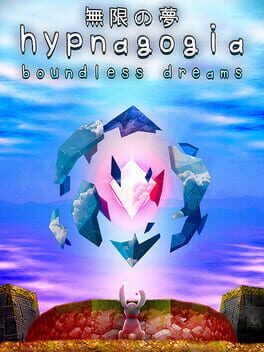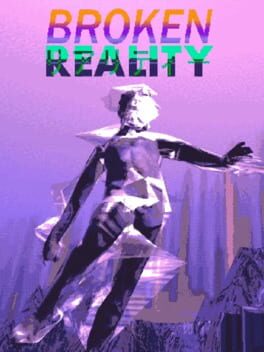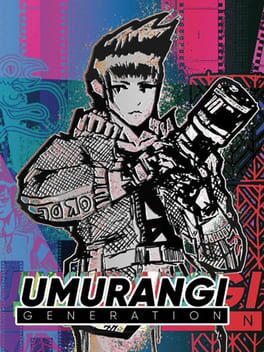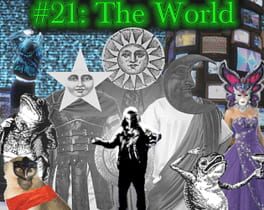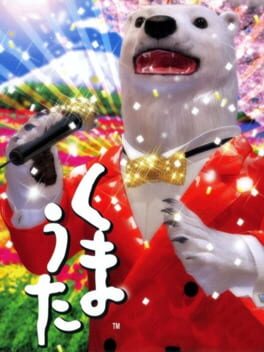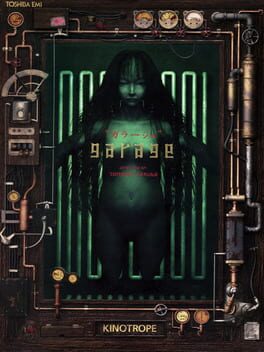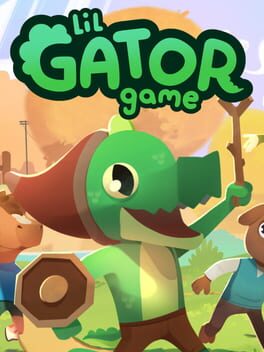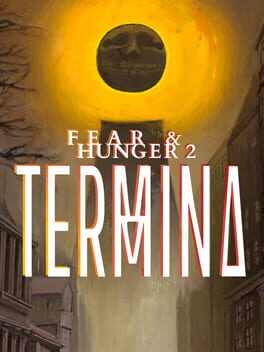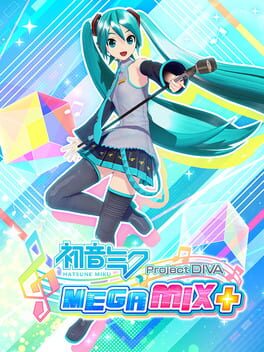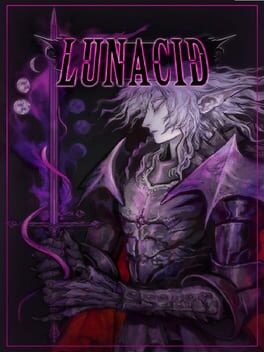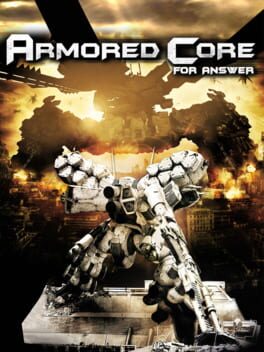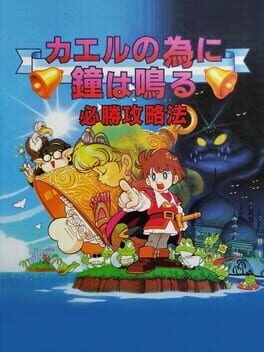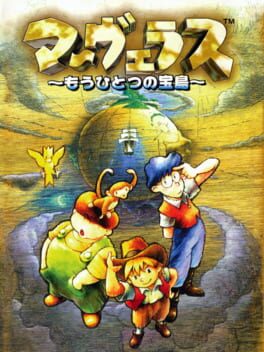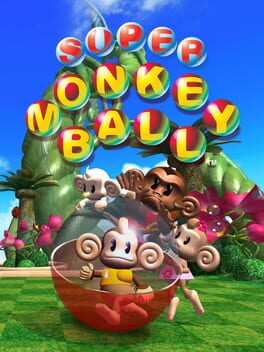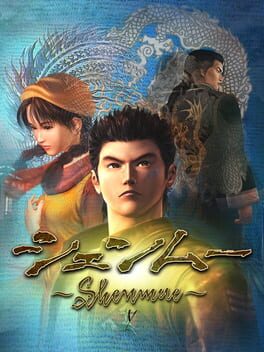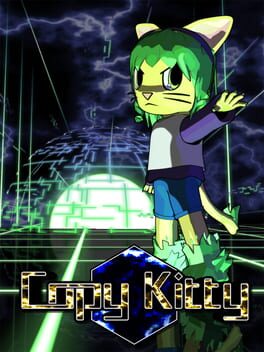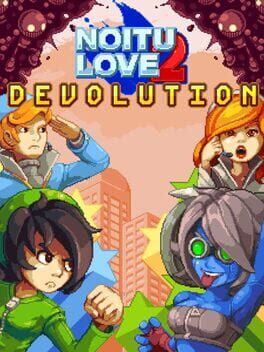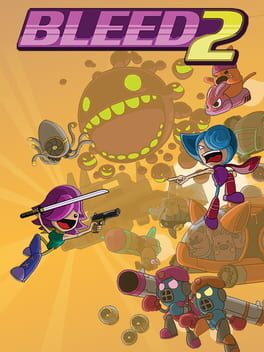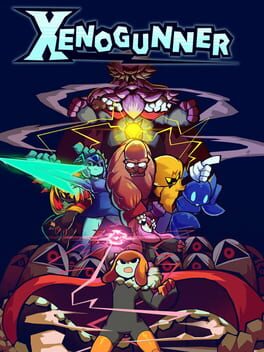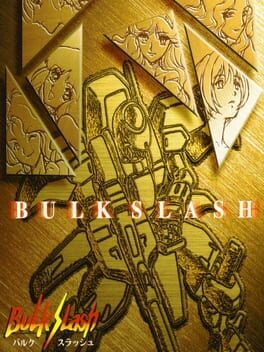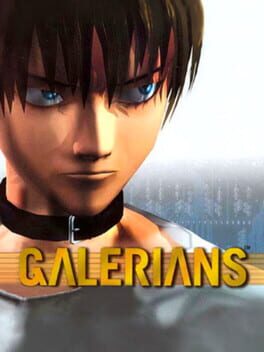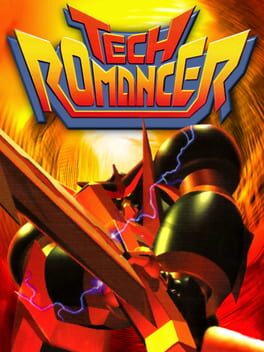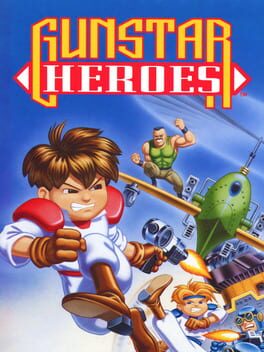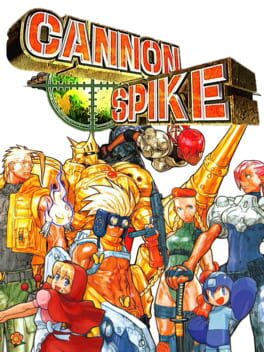Haipa
28 reviews liked by Haipa
Balatro
2024
Obviously not really poker, despite the theme. Strange things happen with the cards in your hands, the poker terminology rapidly descends into insular gibberish, and probability is controlled - but tantalizingly never fully in your control, one always feels the freedom found from giving oneself over. Maximum difficulty runs have a sub-50% winrate, as far as I know.
It's not actually replicating the flow of a poker game. It's about endlessly seeking less so wins and losses, but simply spending more time in The Zone before you're kicked out; of ditching the flashy presentation and exciting music and narrative overtures of its competitition and being a smooth ride to get you into The Zone, of gradually ramping up stimulation to change your baseline level of what's satisfying, of abandoning your agency and accepting that the house always wins and that we will die and it's better to spend your time on the way there insensate and comfortable.
It's not poker, it's a slot machine.
It's not actually replicating the flow of a poker game. It's about endlessly seeking less so wins and losses, but simply spending more time in The Zone before you're kicked out; of ditching the flashy presentation and exciting music and narrative overtures of its competitition and being a smooth ride to get you into The Zone, of gradually ramping up stimulation to change your baseline level of what's satisfying, of abandoning your agency and accepting that the house always wins and that we will die and it's better to spend your time on the way there insensate and comfortable.
It's not poker, it's a slot machine.
”The SRPG Masterpiece That Nobody Has Played”, or, ”Why I Dream of Hexagons”
I don’t suppose myself to be a particularly strong purveyor of obscure games, despite my admiration for them. I tend to prioritise playing stuff that’s both widely and strongly regarded, so it’s a bit auspicious that a few years ago, many months into Covid, going down the rabbit hole of Fire Emblem, coming to the realisation that Thracia was my favourite one and that this Kaga guy was “kinda cool” and deciding to check out his other games, was an event which conveniently coincided with the finalization of a fan translation of Berwick Saga, and that such an event led me to discover one of my favourite games of all time and, in my limited estimation, one of the most underappreciated games of all time, with only a measly 68 plays on Backloggd as of writing.
Berwick Saga is a masterpiece, it’s a sweeping, sprawling labyrinth of shockingly thoughtful SRPG design, linking and weaving together a romantic military drama with gameplay entirely in concert with its themes throughout the entire runtime, it’s the culmination of the long, decades-spanning evolution of design sensibilities from the father of Fire Emblem and a game that, in one fell swoop, solves and revolutionizes the perennial problems facing Fire Emblem-like games, in some cases, years before they would even come to prominence. Know that it’s with great love, then, that I say that it’s entirely understandable why the game has languished in obscurity for almost 18 years: the game only received an English fan translation in February 2020, and it was explicitly designed by Kaga to appeal to hardcore fans of strategy RPGs, much like Thracia 776, which was one of the lowest selling Fire Emblem games. Writing on his blog, Kaga even said that “though people wouldn't appreciate me saying such things, this one might not be suited for people who aren't that good with [SRPGs]”. Shockingly, the game still outsold Path of Radiance, which is more of a testament to how Fire Emblem was struggling in this period rather than Berwick Saga’s success, but It’s this combination of only existing in Japanese and being very niche that have left it hidden from people for so many years. I think it’s time will come, (maybe when a certain youtuber brings attention to it), but speaking more selfishly, there’s a certain joy in having what feels like a secret in videogame form, it’s become a yearly tradition for me to do a playthrough of this game, a game which is not only perfectly suited to my interests but exists for so few, and every time I discover new things and refine the clockwork strategy with which I navigate through it, a love the game reciprocates in how it rewards this kind of obsessiveness, it is, in short, a game for freaks.
Let’s rewind back in time, who is Shouzou Kaga? A simple explanation would be that he’s the original creator of Fire Emblem and the lead designer of the first five games in the series, from 1990 to 1999, but to many of the hardcore fans of Fire Emblem he’s much more than this, he’s an icon, a titan of game design, and a man with a strong creative vision. One of the oft-remarked facets of Kaga’s design, especially Thracia, is his commitment to ludonarrative harmony, and this facet was baked into the very concept of Fire Emblem, speaking with Final Fantasy’s Sakaguchi, he stated that “I wanted to make a strategy game that was more dramatic, something where you would really be able to feel the pain and struggle of the characters.”, it was a core ideal that he would gradually refine in the following years and finally perfect with Berwick Saga, and in this interview we see the kindling of what would eventually become another burning ideal for him - the idea of a sprawling, multi-game, military epic:
“With Fire Emblem I’ve made a “role playing simulation” game, but at the same time, it’s very linear. And I think players who spend so much time building and developing their units will probably feel like, for all that work, they didn’t get to use the units very much. So for the next game, I’m thinking of some kind of simultaneous, multi-scenario setup, where there’s a number of different paths to explore.”
We could say, straightforwardly, that Kaga was the creator of Fire Emblem, but much more profoundly, he’s a man trying to create the videogame version of a multi-book war novel, the videogame version of War and Peace, it’s a dream that he’s still trying to fulfil to this day, and understanding this dream contextualizes his actions following 1999. During the development of Fire Emblem 64, Kaga would abruptly leave Nintendo, dissatisfied with the hardware limitations of the N64, specifically how it handled saving and its inability to transfer saves between games. Recognising that the PS1 was much more suited to the fulfilment of his dream game, he would found Tirnanog, his own company, and begin development of TearRing Saga. I won’t exhaustively cover the events that follow (you can watch this if you’d like to know the full story, albeit in a sensationalized form), for our purposes, all we need to know is that Nintendo would file a lawsuit against Tirnanog for its similarity to Fire Emblem, and that Tirnanog was ordered to pay a 76 million yen fine to Nintendo.
Thankfully, TearRing Saga was still allowed to go onto store shelves, it would still recuperate its development costs, and Tirnanog was financially solvent enough to create another game, but this time, it would need to be significantly different to Fire Emblem.
It was a blessing in disguise. The legally imposed requirement to change the fundamental characteristics of his games would allow Kaga to return to the drawing board, inject his years of lessons from making SRPGs, and create something that was far superior to his previous works on an elementary mechanical level. Instead of a square grid, maps were now composed of hexes, a seemingly superficial change with radical implications: Instead of each flank having one side to be attacked from, now there were three. Defending units from attack was now much more precarious and required much more consideration of placement. Instead of the Fire Emblem alternating turn system, where you move all of your units and then the enemy moves all of theirs, now you and the enemy take your turn simultaneously, proportional to how many units you have. This mechanically reinforces the feeling of being outnumbered since, if the enemy outnumbers you two to one, they will get two actions for every one that you get. Reflecting on the superiority of this system to the old one on his blog, Kaga wrote that “In the usual alternating turn system there's no escaping the homogeneity of tactics, specifically the "baiting" tactic. No matter how complex you make the computer’s thought process, the player will always have the advantage. But with the simultaneous turn system, [...] the standard tactic of "keep the distance, bait them out and gang up with overwhelming numbers" cannot be used, and the player is forced to adapt to each situation.” To accompany this, Berwick Saga sees a much more sophisticated enemy AI than any existing Fire Emblem game, which determines and re-evaluates which actions should be prioritised in the turn and where zones of activity are occurring after every action. The simultaneous turn system both requires and allows for much more complicated strategy and care in the order of your actions, my favourite tactic is the ability to abuse the fact that the player always gets the first action of the turn, meaning you can use the last and first action of a turn to take two turns before the enemy has a chance to act. All of these changes iterate and improve upon the thematic precariousness that was expressed in Thracia 776. In that game, the hit rate was hard-capped to 99, such that at any given moment, the player could be required to adjust their strategy spontaneously. With Berwick, the same thing has been achieved more elegantly by baking it into the core systems.
And much like Thracia, the story and resource management reinforce this theme of precariousness and being at the mercy of your environment. Reese, our protagonist, has been called from the remote lands of Sinon to serve in the Berwick League. Their side are losing the war and it’s not pretty. Funds and equipment have to be scrounged together from odd jobs, bounties, or captured enemies. The grizzly reality of war, the abuse of prisoners of war, the corruption and incompetence of those in command, the flood of refugees and proliferation of orphans, all of these are brought to the forefront throughout the story. Unlike any previous game, many units in this game are mercenaries who have to be hired with money, slowly depleting your stock of funds. Decisions have to be made like “do I hire this strong unit or do I save my money?”, “Do I buy good weapons or save up for something else?”. Even the missions build into this: Because the Knights of Sinon have a lot of cavaliers, they’re sent on many guerilla missions where they have to achieve an objective under a time limit - free these prisoners before the sun comes up, protect these injured soldiers as they escape a war zone, then escape yourself, it all has to be done in 24 turns. While many of these time limits aren’t hard to satisfy, they still lead to a frantic, building tension where you escape just in time with imperial forces swarming you, breathing down your neck.
More than any particular bleakness, what I find fascinating about this story is how Reese is merely a part of a much larger epic. As I mentioned earlier, it was always Kaga’s dream to create a multi-game war story, which lends his games a unique feeling of smallness. Easily my favourite map in TearRing Saga is map 21, in which our protagonist Holmes is saved by a group revealed to basically be the real heroes. A completely independent, unplayable troupe of holy relic-wielding badasses undertaking their own quest. It’s a great moment of displacement. In one disempowering instant you understand that, no, you’re not the centre of this story or this universe. Berwick Saga is the same, intended to be just one side of a larger story. The evil emperor and the evil pope of this game are defeated off-screen by two different handsome tragic heroes who could have easily had games made about them instead, of which we only see snippets. Kaga himself summed all this up with the statement that “[Berwick Saga] is not a heroic fantasy, it's a human drama taking place on the stage consisting of history and war“. This is why the game has the (admittedly ridiculous) subtitle of “Chapter 174”, it evokes the feeling of picking out a random chapter in the middle of an enormous chronicle.
Previously, I pointed out how Berwick Saga solves the perennial problem of baiting from Fire Emblem, but this is really only the surface of what it gets right, I’ll touch on two more: Mounted units and supports.
The balancing of mounted units is one of the most infamous recurring problems in Fire Emblem. Kaga himself was responsible for the overcentralizing presence of mounted units in Genealogy of the Holy War, but while in 2005, Path of Radiance witnessed one of the most overpowered incarnations of them, Berwick Saga had already solved it, releasing merely one month later. Cavalry are strong in Berwick, they have 7 move instead of the usual 4 and have the usual Canto skill, but there’s a twist. Horses in Berwick have their own health bars and can die just as their riders can. Once their horse dies the unit is now stuck walking until you buy or assign them a new horse. Buying a new horse (or at least, one that won’t die in two hits) is a significant financial commitment in a game where money is a precious resource. So instead of making mounted units less fun to use by nerfing them directly, Kaga found an outside-the-box way of balancing them which further reinforces the themes and systems of the game, and the fact that Fire Emblem is still struggling to solve this speaks for itself.
Supports are another system that Fire Emblem hasn't solved, which has been relitigated rather recently, Berwick, as usual, solves it in a creative way. Every mercenary has a hidden happiness number that goes up when you hire and deploy them, which unlocks scenes related to their side stories and recruitment, they even have entire hidden paralogues in there! All of this allows specific character moments and developments to be contextualised by occurring at specific moments in the story, avoiding the FE support problem. Members of the Knights of Sinon have entire paralogues devoted to their personal stories, events even occur within chapters themselves, often requiring the fulfilment of some side object, all of which weaves character and gameplay together in a much deeper way than disjointed support conversations.
The unit design is easily Kaga’s best from a gameplay perspective. With Genealogy, Kaga discovered that personal skills were one of the best ways to bestow each individual unit with a different feel and function. He iterated upon this through Thracia and TearRing Saga, until he perfected it with Berwick Saga. Every unit here is radically different and some of the skills are game-changing. There are several playable units who, at base, have the incredibly strong “breaker” and “bane” skills, which in nu-Fire Emblem were strictly reserved for advanced classes, there are units with the skill “Deathmatch”, which puts them into 5 rounds of combat with any given enemy, radically improving their player-phase combat potential, other units have similarly strong but radically different skills, “Pulverize”, for example, allows a unit to double their attack in exchange for not moving, giving these units a stationary turret feel. Not only are the skills strong and individuating, they’re expertly crafted to fit the maps. Kramer, for instance, has the skill “Climber” and “Arrowsbane”, meaning he doesn’t lose his avoid on cliffs, and has extra avoid against all arrows, perfectly suiting him to Chapter 11-1, in which you are tasked with scaling a cliff defended by ballistas and crossbowmen. Esteban has the ability to see further in fog-of-war and negate enemies' forest avoid bonus, perfectly suiting him to chapter 12-1, a fog-of-war map in a dense forest. I could go on for almost every unit. What I want to stress is that every aspect of Berwick Saga is masterfully sculpted to feed into and reinforce every other part of the game: The maps are designed to fit the units, your ability to pick the right units is related to the mercenary system - the happiness and side-stories of the characters, your ability to fulfil these is reliant on your resource-management, which is reinforced by the struggle occurring in the narrative, the narrative intertwines with the maps, and so we come to a full circle in which every part of the game is hermetically bound together.
Speaking of map design, I’m not gonna sugarcoat it, Kaga’s map design is so many leaps and bounds more sophisticated and interesting than Fire Emblem’s that it causes FE fans to have existential crises. At times it can be almost too intricate. Berwick Saga maps are a joy, especially the main chapter maps, not merely because of the tension from the aforementioned time limits, but because of the sheer wealth of side objectives and optional events. To give you a sense of this, I’m going to overview a map, Chapter 3. In this map, Reese has been tasked with escorting three priests to a temple, but there’s a twist, the three priests are all old men who stubbornly disagree on the best route to take to the temple, so they decide to all go different routes. The player is tasked with splitting up their 12 units into a top, middle and bottom lane to cover the priests as they advance. Even worse, waiting for them at the temple is a bandit who is able to stack buffs onto himself with the Battle Cry skill, so the player needs to get there first and clear the way. On the way, all three priests will trigger different events: On the lower route is a superboss that the playable unit Faye will attempt to duel and fail, furthering our awareness of her backstory. In the middle is an assassin who attempts to kill the priest, only to be saved by a mysterious Knight who will later become a playable character, and on the top path the priest encounters another playable character, Owen, in an event that hints at his burgeoning secret. On top of this, around turn 20, the playable character Esteban shows up as an enemy and can be convinced to stand down by Christine, citing his financial troubles which the player can help with by later hiring him as a mercenary. Around the same time, the bounty target Garos turns up on the bottom of the map, he’s a tough enemy, boasting the “Obfuscate” skill, which hides his stats, and an assassin knife, which gives him a whopping 80 crit, but if you take him down before he escapes you get rewarded with a handsome 5000 gold by the mercenary guild. On top of this, there’s a locket in the centre of the lake that can be recovered by Axel, the only unit capable of walking on water tiles, four search points strewn through the map, and a Razite cleric who drops the Darkmend spell, useless to the player, but sought after by the collector Ertzheimer. The player must attend to all of this while also juggling regular combat duties, in a word, it’s dense. This is just one map. And if you’ll forgive the constant comparisons to Fire Emblem, whose maps (especially post-Awakening) are often just flat terrain with enemies randomly strewn about with no side objectives or optional events, it’s not even a contest in my mind.
Let’s address some criticism. People say this game is slow, personally I use the word “suspenseful”, but I won’t deny it’s true. Because hit rates are so shaky and hitting or missing has such consequences, the animations are very slow to give each outcome an air of gravitas. However, this does become a problem when you have to reload and redo progress, it can threaten to become tedious. If you’re new and struggling and constantly reloading (which you will be because this game is HARD), those slow animations can become torturous and I’m sympathetic to this. Kaga himself actually suggested only playing the game in 5-turn bursts because of this.
The durability system is weird. Instead of numerical uses, equipment has states of disrepair that each have a chance to break associated with them. It’s possible for a brand new sword to trigger a 1% chance to break upon being used for the first time, which unfailingly makes you want to punch a hole in your wall.
Personally I find these things to be superficial blemishes on what is unambiguously a masterpiece of game design. Despite that, this is not the videogame version of War and Peace that Kaga wished to make, as it’s only one game. Tirnanog would dissolve before any other sides of this story could be told. Hopefully Vestaria Saga can evolve into that, but it’s still a shame that because of the limitations of SRPG studio, Berwick Saga will likely forever be the peak in terms of combining his game design with a unique art direction. While at times it feels like my personal hidden gem, I do hope that this game gets the recognition it deserves one day. To paraphrase a certain critic, if we can all help the cream to rise to the proverbial crop, we’ll all benefit in the long run, and there are ideas in here that desperately need to be injected into the standard praxis of SPRG design, so, long live Berwick Saga, and if you got this far, thanks for reading!
And, if you do decide to give it a try, just remember, trust in Dean. Dean will see you through.
—-------------------------------
Translation of Kaga’s blog, I altered some of this in the text to make it scan a bit better.
Favourite OST
I don’t suppose myself to be a particularly strong purveyor of obscure games, despite my admiration for them. I tend to prioritise playing stuff that’s both widely and strongly regarded, so it’s a bit auspicious that a few years ago, many months into Covid, going down the rabbit hole of Fire Emblem, coming to the realisation that Thracia was my favourite one and that this Kaga guy was “kinda cool” and deciding to check out his other games, was an event which conveniently coincided with the finalization of a fan translation of Berwick Saga, and that such an event led me to discover one of my favourite games of all time and, in my limited estimation, one of the most underappreciated games of all time, with only a measly 68 plays on Backloggd as of writing.
Berwick Saga is a masterpiece, it’s a sweeping, sprawling labyrinth of shockingly thoughtful SRPG design, linking and weaving together a romantic military drama with gameplay entirely in concert with its themes throughout the entire runtime, it’s the culmination of the long, decades-spanning evolution of design sensibilities from the father of Fire Emblem and a game that, in one fell swoop, solves and revolutionizes the perennial problems facing Fire Emblem-like games, in some cases, years before they would even come to prominence. Know that it’s with great love, then, that I say that it’s entirely understandable why the game has languished in obscurity for almost 18 years: the game only received an English fan translation in February 2020, and it was explicitly designed by Kaga to appeal to hardcore fans of strategy RPGs, much like Thracia 776, which was one of the lowest selling Fire Emblem games. Writing on his blog, Kaga even said that “though people wouldn't appreciate me saying such things, this one might not be suited for people who aren't that good with [SRPGs]”. Shockingly, the game still outsold Path of Radiance, which is more of a testament to how Fire Emblem was struggling in this period rather than Berwick Saga’s success, but It’s this combination of only existing in Japanese and being very niche that have left it hidden from people for so many years. I think it’s time will come, (maybe when a certain youtuber brings attention to it), but speaking more selfishly, there’s a certain joy in having what feels like a secret in videogame form, it’s become a yearly tradition for me to do a playthrough of this game, a game which is not only perfectly suited to my interests but exists for so few, and every time I discover new things and refine the clockwork strategy with which I navigate through it, a love the game reciprocates in how it rewards this kind of obsessiveness, it is, in short, a game for freaks.
Let’s rewind back in time, who is Shouzou Kaga? A simple explanation would be that he’s the original creator of Fire Emblem and the lead designer of the first five games in the series, from 1990 to 1999, but to many of the hardcore fans of Fire Emblem he’s much more than this, he’s an icon, a titan of game design, and a man with a strong creative vision. One of the oft-remarked facets of Kaga’s design, especially Thracia, is his commitment to ludonarrative harmony, and this facet was baked into the very concept of Fire Emblem, speaking with Final Fantasy’s Sakaguchi, he stated that “I wanted to make a strategy game that was more dramatic, something where you would really be able to feel the pain and struggle of the characters.”, it was a core ideal that he would gradually refine in the following years and finally perfect with Berwick Saga, and in this interview we see the kindling of what would eventually become another burning ideal for him - the idea of a sprawling, multi-game, military epic:
“With Fire Emblem I’ve made a “role playing simulation” game, but at the same time, it’s very linear. And I think players who spend so much time building and developing their units will probably feel like, for all that work, they didn’t get to use the units very much. So for the next game, I’m thinking of some kind of simultaneous, multi-scenario setup, where there’s a number of different paths to explore.”
We could say, straightforwardly, that Kaga was the creator of Fire Emblem, but much more profoundly, he’s a man trying to create the videogame version of a multi-book war novel, the videogame version of War and Peace, it’s a dream that he’s still trying to fulfil to this day, and understanding this dream contextualizes his actions following 1999. During the development of Fire Emblem 64, Kaga would abruptly leave Nintendo, dissatisfied with the hardware limitations of the N64, specifically how it handled saving and its inability to transfer saves between games. Recognising that the PS1 was much more suited to the fulfilment of his dream game, he would found Tirnanog, his own company, and begin development of TearRing Saga. I won’t exhaustively cover the events that follow (you can watch this if you’d like to know the full story, albeit in a sensationalized form), for our purposes, all we need to know is that Nintendo would file a lawsuit against Tirnanog for its similarity to Fire Emblem, and that Tirnanog was ordered to pay a 76 million yen fine to Nintendo.
Thankfully, TearRing Saga was still allowed to go onto store shelves, it would still recuperate its development costs, and Tirnanog was financially solvent enough to create another game, but this time, it would need to be significantly different to Fire Emblem.
It was a blessing in disguise. The legally imposed requirement to change the fundamental characteristics of his games would allow Kaga to return to the drawing board, inject his years of lessons from making SRPGs, and create something that was far superior to his previous works on an elementary mechanical level. Instead of a square grid, maps were now composed of hexes, a seemingly superficial change with radical implications: Instead of each flank having one side to be attacked from, now there were three. Defending units from attack was now much more precarious and required much more consideration of placement. Instead of the Fire Emblem alternating turn system, where you move all of your units and then the enemy moves all of theirs, now you and the enemy take your turn simultaneously, proportional to how many units you have. This mechanically reinforces the feeling of being outnumbered since, if the enemy outnumbers you two to one, they will get two actions for every one that you get. Reflecting on the superiority of this system to the old one on his blog, Kaga wrote that “In the usual alternating turn system there's no escaping the homogeneity of tactics, specifically the "baiting" tactic. No matter how complex you make the computer’s thought process, the player will always have the advantage. But with the simultaneous turn system, [...] the standard tactic of "keep the distance, bait them out and gang up with overwhelming numbers" cannot be used, and the player is forced to adapt to each situation.” To accompany this, Berwick Saga sees a much more sophisticated enemy AI than any existing Fire Emblem game, which determines and re-evaluates which actions should be prioritised in the turn and where zones of activity are occurring after every action. The simultaneous turn system both requires and allows for much more complicated strategy and care in the order of your actions, my favourite tactic is the ability to abuse the fact that the player always gets the first action of the turn, meaning you can use the last and first action of a turn to take two turns before the enemy has a chance to act. All of these changes iterate and improve upon the thematic precariousness that was expressed in Thracia 776. In that game, the hit rate was hard-capped to 99, such that at any given moment, the player could be required to adjust their strategy spontaneously. With Berwick, the same thing has been achieved more elegantly by baking it into the core systems.
And much like Thracia, the story and resource management reinforce this theme of precariousness and being at the mercy of your environment. Reese, our protagonist, has been called from the remote lands of Sinon to serve in the Berwick League. Their side are losing the war and it’s not pretty. Funds and equipment have to be scrounged together from odd jobs, bounties, or captured enemies. The grizzly reality of war, the abuse of prisoners of war, the corruption and incompetence of those in command, the flood of refugees and proliferation of orphans, all of these are brought to the forefront throughout the story. Unlike any previous game, many units in this game are mercenaries who have to be hired with money, slowly depleting your stock of funds. Decisions have to be made like “do I hire this strong unit or do I save my money?”, “Do I buy good weapons or save up for something else?”. Even the missions build into this: Because the Knights of Sinon have a lot of cavaliers, they’re sent on many guerilla missions where they have to achieve an objective under a time limit - free these prisoners before the sun comes up, protect these injured soldiers as they escape a war zone, then escape yourself, it all has to be done in 24 turns. While many of these time limits aren’t hard to satisfy, they still lead to a frantic, building tension where you escape just in time with imperial forces swarming you, breathing down your neck.
More than any particular bleakness, what I find fascinating about this story is how Reese is merely a part of a much larger epic. As I mentioned earlier, it was always Kaga’s dream to create a multi-game war story, which lends his games a unique feeling of smallness. Easily my favourite map in TearRing Saga is map 21, in which our protagonist Holmes is saved by a group revealed to basically be the real heroes. A completely independent, unplayable troupe of holy relic-wielding badasses undertaking their own quest. It’s a great moment of displacement. In one disempowering instant you understand that, no, you’re not the centre of this story or this universe. Berwick Saga is the same, intended to be just one side of a larger story. The evil emperor and the evil pope of this game are defeated off-screen by two different handsome tragic heroes who could have easily had games made about them instead, of which we only see snippets. Kaga himself summed all this up with the statement that “[Berwick Saga] is not a heroic fantasy, it's a human drama taking place on the stage consisting of history and war“. This is why the game has the (admittedly ridiculous) subtitle of “Chapter 174”, it evokes the feeling of picking out a random chapter in the middle of an enormous chronicle.
Previously, I pointed out how Berwick Saga solves the perennial problem of baiting from Fire Emblem, but this is really only the surface of what it gets right, I’ll touch on two more: Mounted units and supports.
The balancing of mounted units is one of the most infamous recurring problems in Fire Emblem. Kaga himself was responsible for the overcentralizing presence of mounted units in Genealogy of the Holy War, but while in 2005, Path of Radiance witnessed one of the most overpowered incarnations of them, Berwick Saga had already solved it, releasing merely one month later. Cavalry are strong in Berwick, they have 7 move instead of the usual 4 and have the usual Canto skill, but there’s a twist. Horses in Berwick have their own health bars and can die just as their riders can. Once their horse dies the unit is now stuck walking until you buy or assign them a new horse. Buying a new horse (or at least, one that won’t die in two hits) is a significant financial commitment in a game where money is a precious resource. So instead of making mounted units less fun to use by nerfing them directly, Kaga found an outside-the-box way of balancing them which further reinforces the themes and systems of the game, and the fact that Fire Emblem is still struggling to solve this speaks for itself.
Supports are another system that Fire Emblem hasn't solved, which has been relitigated rather recently, Berwick, as usual, solves it in a creative way. Every mercenary has a hidden happiness number that goes up when you hire and deploy them, which unlocks scenes related to their side stories and recruitment, they even have entire hidden paralogues in there! All of this allows specific character moments and developments to be contextualised by occurring at specific moments in the story, avoiding the FE support problem. Members of the Knights of Sinon have entire paralogues devoted to their personal stories, events even occur within chapters themselves, often requiring the fulfilment of some side object, all of which weaves character and gameplay together in a much deeper way than disjointed support conversations.
The unit design is easily Kaga’s best from a gameplay perspective. With Genealogy, Kaga discovered that personal skills were one of the best ways to bestow each individual unit with a different feel and function. He iterated upon this through Thracia and TearRing Saga, until he perfected it with Berwick Saga. Every unit here is radically different and some of the skills are game-changing. There are several playable units who, at base, have the incredibly strong “breaker” and “bane” skills, which in nu-Fire Emblem were strictly reserved for advanced classes, there are units with the skill “Deathmatch”, which puts them into 5 rounds of combat with any given enemy, radically improving their player-phase combat potential, other units have similarly strong but radically different skills, “Pulverize”, for example, allows a unit to double their attack in exchange for not moving, giving these units a stationary turret feel. Not only are the skills strong and individuating, they’re expertly crafted to fit the maps. Kramer, for instance, has the skill “Climber” and “Arrowsbane”, meaning he doesn’t lose his avoid on cliffs, and has extra avoid against all arrows, perfectly suiting him to Chapter 11-1, in which you are tasked with scaling a cliff defended by ballistas and crossbowmen. Esteban has the ability to see further in fog-of-war and negate enemies' forest avoid bonus, perfectly suiting him to chapter 12-1, a fog-of-war map in a dense forest. I could go on for almost every unit. What I want to stress is that every aspect of Berwick Saga is masterfully sculpted to feed into and reinforce every other part of the game: The maps are designed to fit the units, your ability to pick the right units is related to the mercenary system - the happiness and side-stories of the characters, your ability to fulfil these is reliant on your resource-management, which is reinforced by the struggle occurring in the narrative, the narrative intertwines with the maps, and so we come to a full circle in which every part of the game is hermetically bound together.
Speaking of map design, I’m not gonna sugarcoat it, Kaga’s map design is so many leaps and bounds more sophisticated and interesting than Fire Emblem’s that it causes FE fans to have existential crises. At times it can be almost too intricate. Berwick Saga maps are a joy, especially the main chapter maps, not merely because of the tension from the aforementioned time limits, but because of the sheer wealth of side objectives and optional events. To give you a sense of this, I’m going to overview a map, Chapter 3. In this map, Reese has been tasked with escorting three priests to a temple, but there’s a twist, the three priests are all old men who stubbornly disagree on the best route to take to the temple, so they decide to all go different routes. The player is tasked with splitting up their 12 units into a top, middle and bottom lane to cover the priests as they advance. Even worse, waiting for them at the temple is a bandit who is able to stack buffs onto himself with the Battle Cry skill, so the player needs to get there first and clear the way. On the way, all three priests will trigger different events: On the lower route is a superboss that the playable unit Faye will attempt to duel and fail, furthering our awareness of her backstory. In the middle is an assassin who attempts to kill the priest, only to be saved by a mysterious Knight who will later become a playable character, and on the top path the priest encounters another playable character, Owen, in an event that hints at his burgeoning secret. On top of this, around turn 20, the playable character Esteban shows up as an enemy and can be convinced to stand down by Christine, citing his financial troubles which the player can help with by later hiring him as a mercenary. Around the same time, the bounty target Garos turns up on the bottom of the map, he’s a tough enemy, boasting the “Obfuscate” skill, which hides his stats, and an assassin knife, which gives him a whopping 80 crit, but if you take him down before he escapes you get rewarded with a handsome 5000 gold by the mercenary guild. On top of this, there’s a locket in the centre of the lake that can be recovered by Axel, the only unit capable of walking on water tiles, four search points strewn through the map, and a Razite cleric who drops the Darkmend spell, useless to the player, but sought after by the collector Ertzheimer. The player must attend to all of this while also juggling regular combat duties, in a word, it’s dense. This is just one map. And if you’ll forgive the constant comparisons to Fire Emblem, whose maps (especially post-Awakening) are often just flat terrain with enemies randomly strewn about with no side objectives or optional events, it’s not even a contest in my mind.
Let’s address some criticism. People say this game is slow, personally I use the word “suspenseful”, but I won’t deny it’s true. Because hit rates are so shaky and hitting or missing has such consequences, the animations are very slow to give each outcome an air of gravitas. However, this does become a problem when you have to reload and redo progress, it can threaten to become tedious. If you’re new and struggling and constantly reloading (which you will be because this game is HARD), those slow animations can become torturous and I’m sympathetic to this. Kaga himself actually suggested only playing the game in 5-turn bursts because of this.
The durability system is weird. Instead of numerical uses, equipment has states of disrepair that each have a chance to break associated with them. It’s possible for a brand new sword to trigger a 1% chance to break upon being used for the first time, which unfailingly makes you want to punch a hole in your wall.
Personally I find these things to be superficial blemishes on what is unambiguously a masterpiece of game design. Despite that, this is not the videogame version of War and Peace that Kaga wished to make, as it’s only one game. Tirnanog would dissolve before any other sides of this story could be told. Hopefully Vestaria Saga can evolve into that, but it’s still a shame that because of the limitations of SRPG studio, Berwick Saga will likely forever be the peak in terms of combining his game design with a unique art direction. While at times it feels like my personal hidden gem, I do hope that this game gets the recognition it deserves one day. To paraphrase a certain critic, if we can all help the cream to rise to the proverbial crop, we’ll all benefit in the long run, and there are ideas in here that desperately need to be injected into the standard praxis of SPRG design, so, long live Berwick Saga, and if you got this far, thanks for reading!
And, if you do decide to give it a try, just remember, trust in Dean. Dean will see you through.
—-------------------------------
Translation of Kaga’s blog, I altered some of this in the text to make it scan a bit better.
Favourite OST
After 100%ing the game and getting absolutely everything it had to offer, I can safely say that it is by far one of the best sequels I’ve had the pleasure of playing. Whether or not it surpasses the original is something that can be debated on but I find it to be easily on par.
The storytelling and characterization this time around goes for a more subtler approach compared to the original and relies on character interactions and the way these evolve throughout the game, which ties into its main theme: identity. If OG TWEWY was about how relationships can change and affect the individual, then NEO TWEWY is the opposite in that it’s about how individual change affects that person's relationships. On the surface, they might seem like the same thing, but they’re really not because it’s through this lens that you’re able to see how the characters evolve and change, with our main character Rindo being the perfect examples of this.
Rindo’s an almost painfully realistic depiction of your average teenager: a guy that has no confidence in himself and the decisions he makes and tries to pass off his responsibilities onto other people whenever he gets the chance to. He’s quiet, reserved, and very closed off, only ever truly opening up to his friend Swallow, and you can see this constantly when you peer into his head and observe how he neurotically commentates on every move he or someone else does. He also has the tendency to take the people around him for granted. In some ways, he’s lot like Neku in the sense that he’s cut himself off from other people but whereas Neku actively rejected other people, Rindo just doesn’t care to get close to them. Even when their team needed more people so they could survive just one week, Rindo preferred relying on the skills Sho had already shown them rather than even trying to meet Nagi, and he might not’ve recruited her if not for him trying to avoid having her Dive into his head again. There’s also how he didn’t confide into his teammates about his time travel abilities until Sho dragged it out in the open for the others to know about. To Rindo, following along with who he already knew while not confiding in them kept him safe and able to just slip through life without having to worry. In that sense, I honestly feel that his arc is more organic and fluid compared to Neku’s and I say this as someone who loves Neku’s character arc. As the game goes on, he learns to takes charge, listens to his teammates fully, seeks and reaches out to people, and overpasses his aversion of going towards people to make the first connection. He’s actually the one willing to do the first step and remind people of what’s at stake, instead of being lead around on a whim by others.
Over the course of the game/Game, Rindo grows from someone not deciding anything to avoid the responsibility of a bad outcome and bristling when called out on that, to someone becoming brave enough to fully undertake the weight of such decisions, willing to risk himself in a bit more and as a leader, and fully expressing his opinion about things and plans instead of just poking holes into others’ ideas and appropriating their advices as his like he did with certain influences in his life.
You get to see this progression for most of the other characters in the game, with Shoka in particular being one of the best written characters across both TWEWY games in my opinion thanks to her characterization and the subtleties in her actions. That’s not to say this approach is perfect as the pacing can be pretty slow at times and some characters could’ve definitely benefitted by having more screentime but overall, I still found that NEO had a valuable message and theme to deliver in spite of it all.
Next up is the combat and hoo boy do I have a lot to say about it. It most definitely isn’t perfect, with its issues mostly boiling down to the lower enemy variety compared to the original (which had its fair share of recolors as well, mind you) and the camera being an annoyance at some points but by God, they somehow nailed the combat and it’s honestly tied with the original as one of my favorite JRPG battle systems. This time around, each character is mapped to a button to the controller (you can switch around which characters has what pin so it isn’t set in stone for which character can use a certain pin). Each attack type in the game has a condition that requires you to “Drop the Beat”, basically a combo finisher that’s tacked onto each pin and they each have their own variations. For example, some will have you inflicting status ailments on enemies, others will have you launching enemies in the air or into walls and some will have you piledriving them into the ground and so on and so forth. You do this in order to gradually build your Groove meter and unleash Mashups, which are 15 different elemental attacks that each have their own unique effect and can be activated and used on the battle field while you’re doing combos, such as summoning a giant gravitational ball of energy to suck enemies in, covering the ground with ice spikes that freeze enemies on contact and can have you bounce them around on the spikes for additional damage, stopping time to freeze absolutely everything to place, and more. There are pins with special abilities that reward you greatly when you set certain combos up right, whether it’s using knockdown pins to activate Grave Marker’s finisher, using launcher pins to increase the power of aerial pins such as Leo Armo or Meteor Strike, using chain pins to entangle enemies and increase the power of Drift Tackle or Swift Strike pins and more.
You have a wide variety of options that range from straight attacks, wide attacks, knockbacks, launchers (and following launchers), knockdowns, quick safe attacks, slow high investment attacks in exchange for higher damage/combo opportunities, repositioning attacks, crowd AoEs and more. You also have options for ranged attacks (with bullets, lasers, sweeping shockwaves, rockets for differing effects), charge attacks, staggering enemies and dispersing crowds, repositioning (enemies and yourself), multi-hit and freezing enemies, planting mines, and more.
On top of all of this, each pin has different attack speeds, damage outputs, ranges, and special utilities, which encourages you to mix and match in order to find the best possible combination for you and equip a deck that is highly synergized. Even low-powered pins end up being useful in the lategame thanks to quick reboot time compared to the higher damaging types, which is also great for building up Groove faster and getting those 6x Mashups, making for an incredibly balanced system for the most part.
Any good action game worth its salt rewards good positioning and NEO does that and then some and even expands on it compared to the original in multiple ways, both in regard to how you can lay down traps to catch Noise off guard and how you can utilize Mashups in extending your combos or take down enemies quickly. This also applies to how pins work as well.
Take how Massive Hit targets enemies for example. If you line it up just right, you can catch multiple enemies in your line of fire while you're on your way to kick the target into next week or up into the sky. Same thing also applies to Assassin Strike and I actually used this trick to stun multiple enemies at the same time. There's also some cool stuff that you can pull off with Patrol Rounds. The thing about them is how they ALWAYS come back to you after you launch them and if you position yourself to have the Patrol Round come back at you in a specific way by running to a spot, you can catch multiple enemies in the arc as the rounds makes their way towards you. This method also makes taking down Chameleon Noise a breeze since they're usually right by enemies and when you target the Noise next to them, they tend to get caught in the crossfire, which makes them easy to spot. Grenade Launcher, Patrol Round, Psychic Shotgun, Storm, and Diffusion Beam pins are especially useful for this.
Another cool thing about NEO is how even pins with the same Psych archetype actually have differing ways to make them stand apart mechanically.
For example, the Patrol Round pins each have different arcs that effect how they return towards you and impact enemies.
Cony x Cony (the Gravity variant) shoots out 5 different boomerangs and come back to you as five while Stop the Music (Burst variant you win from Scramble Slam) shoots out 3 different boomerangs but come back to you as one.
On paper, this might make Stop the Music sound worse but you have to keep their Beatdrop conditions in mind. Cony x Cony requires for an enemy/boss to be knocked down to the ground and/or launched in order for you to activate its Beatdrop whereas Stop the Music just has you hitting the enemy with the explosion it activates in order to get the Beatdrop. Little stuff like this can have an impact on how you approach combat when it comes to the bosses and mob design and it's like this for a lot of pins in the game, which I appreciate.
All in all, it’s a very robust and fun battle system with a lot of depth to its various mechanics and the bosses show these aspects off quite nicely, providing fun and unique mechanics of their own as well as a decent challenge if you’re fighting on the higher difficulties. A lot of people are under the impression that button-mashing is the optimal strategy and while that can probably get you through the main game on the lower difficulties, they fail to consider these factors:
-Noise have built-in forced retaliation (think revenge values from Kingdom Hearts.) The enemies will flash yellow, while during this, the damage they received, during combos after the fact, multiplies the enemy attack by how much damage was done to it, then it will flash red and instantly counter attack you with the damages built up in its system. The system is different for a few enemies but will instantly begin the moment they flash yellow. Which means that just button mashing can get you killed, especially when you’re engaging in long chain battles and the revenge values become far more frequent throughout each round.
-There are multiple pin set-ups that highly reward you for timing your combos right in order to build up the most Groove in one go, especially when you unlock the Beatdrop sweetspot mechanic later on that can increase your Groove intake when hitting the Beatdrop in a certain spot (which also differs depending on the pin)
-Ememy design has a decent amount of variety, forcing you to think about what sort of pins and threads to bring into battle as there’s not really one deck that makes short work of every enemy. The dinos, mammoths, and birds are prime examples of these
-Just mashing the buttons all at once will leave you unable able to properly counterattack against particularly troublesome enemies and will most likely lead to you dying multiple times
-The game itself ranks you on how much time you’ve taken playing through a chain as well as how much damage you’ve taken overall, incentivizing you to get better at the mechanics as higher rankings leads to higher PP intake, which is incredibly handy for leveling up and evolving pins.
Another thing I want to talk about is the music and man, they absolutely nailed it yet again. Much like the original, NEO covers a large variety of genres while also going for it’s own distinct vibe at the same time. Whereas the original went for a mix of J-pop, disco, and J-rock, with some stray metal, piano, and rap here and there, NEO goes for a more balanced mix of J-rock and metal, with more rap and pop mixed into tracks with heavier sections, as well as a greater emphasis on mashups, electric instruments, and blended-up and crunchier versions of old songs. That’s not to say it doesn’t have its own fair share of genre variety, however, as the game also contains various genres such as liquid DnB, techno, acoustic, club, drum n bass, power pop, symphonic nu-metal, and more. On top of that, the songs in NEO are much more closely tied to the themes of the game and the progression of the characters, with some even cleverly foreshadowing character details that get revealed later on, such as We’re Losing You and Shibuya Survivor. One thing in particular that I want to talk about in regards to the soundtrack is the inclusion of Soundsurfing and how much I love it’s implementation. Not only is it a clever way to speed up overworld traversal and make traversing through Shibuya a breeze, it’s gives you additional Groove intake bonuses that carry over to a round, which is an incredible use of gameplay mechanics synergizing well with one another. On top of that, Soundsurfing gives almost every song in the game additional and unique percussive elements to spice up the soundtrack even more, giving the music even more variety, which is genuinely impressive as hell. And lastly, it adds up to one incredible usage in the final boss fight.
All-in-all, NEO is a fantastic game and a more than worthy successor to one of the best games on the DS and I tip my hat off to the devs for managing to create another compelling experience even after all of these years.
And with that, I bid you adieu.
The storytelling and characterization this time around goes for a more subtler approach compared to the original and relies on character interactions and the way these evolve throughout the game, which ties into its main theme: identity. If OG TWEWY was about how relationships can change and affect the individual, then NEO TWEWY is the opposite in that it’s about how individual change affects that person's relationships. On the surface, they might seem like the same thing, but they’re really not because it’s through this lens that you’re able to see how the characters evolve and change, with our main character Rindo being the perfect examples of this.
Rindo’s an almost painfully realistic depiction of your average teenager: a guy that has no confidence in himself and the decisions he makes and tries to pass off his responsibilities onto other people whenever he gets the chance to. He’s quiet, reserved, and very closed off, only ever truly opening up to his friend Swallow, and you can see this constantly when you peer into his head and observe how he neurotically commentates on every move he or someone else does. He also has the tendency to take the people around him for granted. In some ways, he’s lot like Neku in the sense that he’s cut himself off from other people but whereas Neku actively rejected other people, Rindo just doesn’t care to get close to them. Even when their team needed more people so they could survive just one week, Rindo preferred relying on the skills Sho had already shown them rather than even trying to meet Nagi, and he might not’ve recruited her if not for him trying to avoid having her Dive into his head again. There’s also how he didn’t confide into his teammates about his time travel abilities until Sho dragged it out in the open for the others to know about. To Rindo, following along with who he already knew while not confiding in them kept him safe and able to just slip through life without having to worry. In that sense, I honestly feel that his arc is more organic and fluid compared to Neku’s and I say this as someone who loves Neku’s character arc. As the game goes on, he learns to takes charge, listens to his teammates fully, seeks and reaches out to people, and overpasses his aversion of going towards people to make the first connection. He’s actually the one willing to do the first step and remind people of what’s at stake, instead of being lead around on a whim by others.
Over the course of the game/Game, Rindo grows from someone not deciding anything to avoid the responsibility of a bad outcome and bristling when called out on that, to someone becoming brave enough to fully undertake the weight of such decisions, willing to risk himself in a bit more and as a leader, and fully expressing his opinion about things and plans instead of just poking holes into others’ ideas and appropriating their advices as his like he did with certain influences in his life.
You get to see this progression for most of the other characters in the game, with Shoka in particular being one of the best written characters across both TWEWY games in my opinion thanks to her characterization and the subtleties in her actions. That’s not to say this approach is perfect as the pacing can be pretty slow at times and some characters could’ve definitely benefitted by having more screentime but overall, I still found that NEO had a valuable message and theme to deliver in spite of it all.
Next up is the combat and hoo boy do I have a lot to say about it. It most definitely isn’t perfect, with its issues mostly boiling down to the lower enemy variety compared to the original (which had its fair share of recolors as well, mind you) and the camera being an annoyance at some points but by God, they somehow nailed the combat and it’s honestly tied with the original as one of my favorite JRPG battle systems. This time around, each character is mapped to a button to the controller (you can switch around which characters has what pin so it isn’t set in stone for which character can use a certain pin). Each attack type in the game has a condition that requires you to “Drop the Beat”, basically a combo finisher that’s tacked onto each pin and they each have their own variations. For example, some will have you inflicting status ailments on enemies, others will have you launching enemies in the air or into walls and some will have you piledriving them into the ground and so on and so forth. You do this in order to gradually build your Groove meter and unleash Mashups, which are 15 different elemental attacks that each have their own unique effect and can be activated and used on the battle field while you’re doing combos, such as summoning a giant gravitational ball of energy to suck enemies in, covering the ground with ice spikes that freeze enemies on contact and can have you bounce them around on the spikes for additional damage, stopping time to freeze absolutely everything to place, and more. There are pins with special abilities that reward you greatly when you set certain combos up right, whether it’s using knockdown pins to activate Grave Marker’s finisher, using launcher pins to increase the power of aerial pins such as Leo Armo or Meteor Strike, using chain pins to entangle enemies and increase the power of Drift Tackle or Swift Strike pins and more.
You have a wide variety of options that range from straight attacks, wide attacks, knockbacks, launchers (and following launchers), knockdowns, quick safe attacks, slow high investment attacks in exchange for higher damage/combo opportunities, repositioning attacks, crowd AoEs and more. You also have options for ranged attacks (with bullets, lasers, sweeping shockwaves, rockets for differing effects), charge attacks, staggering enemies and dispersing crowds, repositioning (enemies and yourself), multi-hit and freezing enemies, planting mines, and more.
On top of all of this, each pin has different attack speeds, damage outputs, ranges, and special utilities, which encourages you to mix and match in order to find the best possible combination for you and equip a deck that is highly synergized. Even low-powered pins end up being useful in the lategame thanks to quick reboot time compared to the higher damaging types, which is also great for building up Groove faster and getting those 6x Mashups, making for an incredibly balanced system for the most part.
Any good action game worth its salt rewards good positioning and NEO does that and then some and even expands on it compared to the original in multiple ways, both in regard to how you can lay down traps to catch Noise off guard and how you can utilize Mashups in extending your combos or take down enemies quickly. This also applies to how pins work as well.
Take how Massive Hit targets enemies for example. If you line it up just right, you can catch multiple enemies in your line of fire while you're on your way to kick the target into next week or up into the sky. Same thing also applies to Assassin Strike and I actually used this trick to stun multiple enemies at the same time. There's also some cool stuff that you can pull off with Patrol Rounds. The thing about them is how they ALWAYS come back to you after you launch them and if you position yourself to have the Patrol Round come back at you in a specific way by running to a spot, you can catch multiple enemies in the arc as the rounds makes their way towards you. This method also makes taking down Chameleon Noise a breeze since they're usually right by enemies and when you target the Noise next to them, they tend to get caught in the crossfire, which makes them easy to spot. Grenade Launcher, Patrol Round, Psychic Shotgun, Storm, and Diffusion Beam pins are especially useful for this.
Another cool thing about NEO is how even pins with the same Psych archetype actually have differing ways to make them stand apart mechanically.
For example, the Patrol Round pins each have different arcs that effect how they return towards you and impact enemies.
Cony x Cony (the Gravity variant) shoots out 5 different boomerangs and come back to you as five while Stop the Music (Burst variant you win from Scramble Slam) shoots out 3 different boomerangs but come back to you as one.
On paper, this might make Stop the Music sound worse but you have to keep their Beatdrop conditions in mind. Cony x Cony requires for an enemy/boss to be knocked down to the ground and/or launched in order for you to activate its Beatdrop whereas Stop the Music just has you hitting the enemy with the explosion it activates in order to get the Beatdrop. Little stuff like this can have an impact on how you approach combat when it comes to the bosses and mob design and it's like this for a lot of pins in the game, which I appreciate.
All in all, it’s a very robust and fun battle system with a lot of depth to its various mechanics and the bosses show these aspects off quite nicely, providing fun and unique mechanics of their own as well as a decent challenge if you’re fighting on the higher difficulties. A lot of people are under the impression that button-mashing is the optimal strategy and while that can probably get you through the main game on the lower difficulties, they fail to consider these factors:
-Noise have built-in forced retaliation (think revenge values from Kingdom Hearts.) The enemies will flash yellow, while during this, the damage they received, during combos after the fact, multiplies the enemy attack by how much damage was done to it, then it will flash red and instantly counter attack you with the damages built up in its system. The system is different for a few enemies but will instantly begin the moment they flash yellow. Which means that just button mashing can get you killed, especially when you’re engaging in long chain battles and the revenge values become far more frequent throughout each round.
-There are multiple pin set-ups that highly reward you for timing your combos right in order to build up the most Groove in one go, especially when you unlock the Beatdrop sweetspot mechanic later on that can increase your Groove intake when hitting the Beatdrop in a certain spot (which also differs depending on the pin)
-Ememy design has a decent amount of variety, forcing you to think about what sort of pins and threads to bring into battle as there’s not really one deck that makes short work of every enemy. The dinos, mammoths, and birds are prime examples of these
-Just mashing the buttons all at once will leave you unable able to properly counterattack against particularly troublesome enemies and will most likely lead to you dying multiple times
-The game itself ranks you on how much time you’ve taken playing through a chain as well as how much damage you’ve taken overall, incentivizing you to get better at the mechanics as higher rankings leads to higher PP intake, which is incredibly handy for leveling up and evolving pins.
Another thing I want to talk about is the music and man, they absolutely nailed it yet again. Much like the original, NEO covers a large variety of genres while also going for it’s own distinct vibe at the same time. Whereas the original went for a mix of J-pop, disco, and J-rock, with some stray metal, piano, and rap here and there, NEO goes for a more balanced mix of J-rock and metal, with more rap and pop mixed into tracks with heavier sections, as well as a greater emphasis on mashups, electric instruments, and blended-up and crunchier versions of old songs. That’s not to say it doesn’t have its own fair share of genre variety, however, as the game also contains various genres such as liquid DnB, techno, acoustic, club, drum n bass, power pop, symphonic nu-metal, and more. On top of that, the songs in NEO are much more closely tied to the themes of the game and the progression of the characters, with some even cleverly foreshadowing character details that get revealed later on, such as We’re Losing You and Shibuya Survivor. One thing in particular that I want to talk about in regards to the soundtrack is the inclusion of Soundsurfing and how much I love it’s implementation. Not only is it a clever way to speed up overworld traversal and make traversing through Shibuya a breeze, it’s gives you additional Groove intake bonuses that carry over to a round, which is an incredible use of gameplay mechanics synergizing well with one another. On top of that, Soundsurfing gives almost every song in the game additional and unique percussive elements to spice up the soundtrack even more, giving the music even more variety, which is genuinely impressive as hell. And lastly, it adds up to one incredible usage in the final boss fight.
All-in-all, NEO is a fantastic game and a more than worthy successor to one of the best games on the DS and I tip my hat off to the devs for managing to create another compelling experience even after all of these years.
And with that, I bid you adieu.
Baldur's Gate 3
2020
Baldur’s Gate 3 is incapable of escaping comparison to fifth edition Dungeons and Dragons, and it clearly doesn’t want to try. It aestheticizes the act of rolling dice, offers cosmetic skins for when rolling them, and the d20 polyhedron is a core part of its narrative’s iconography. It aims to capture the Dungeons And Dragons Experience, something heavily informed by Critical Role, Community episodes, and broad parodies as much as it aims to capture the 5e player’s handbook.
5e works to take a genre renowned for fiddliness, sand off the rough edges to lower the skill floor even if it harms the ceiling, market it as a beginner-friendly experience even if it lacks common features for any other modern game on the market and has lacking systematization for non-combat sequences, use its unique market position to have eye-catching production values that no other game can attest to, and then have the canny and luck to release right in the middle of a massive upsurge of interest in tabletop roleplay. This, coincidentally, perfectly describes Baldur’s Gate 3 as well.
No game in this genre has had this much effort put into filmic direction and realistic visuals since Dragon Age Origins, and its focus on high-quality cutscenes, voice acting, and motion capture is exactly what was needed to make it sell Elden Ring numbers. Twitter artists’ attention spans have been caught by it in the same personality-altering ways as Mihoyo games and Final Fantasy XIV, which is the true mark of a culturally significant work. Doing mocap for every NPC in the game speaks to its unparalleled ambition and production scope.
Mechanically, the game attempts to offer systemic interactions uncommon to the genre. A confession: I could never get into Divinity Original Sin or its sequel and thus struggle to directly compare its execution. On its own merit, the implementation suffers because of how stifling 5e’s action economy is. Taking two standard actions to throw a barrel and ignite it in a game with a four-man party limit is very rarely the most effective use of a turn, and magic takes forever to start creating interesting environmental effects, by which point it is probably a better use of time to turn one cast Haste on the cracked-out martial class of choice and let them solo the encounter instead.
Martial classes get changes from the 5e PHB which are highly appreciated - general rebalances make some subclasses more compelling, weapon proficiency now grants combat maneuvers with each weapon type that replenish on short rest which allow for debuffs, area-of-effects, and crowd control in ways that are pretty logical for each weapon type, and the oodles of magic items synergize incredibly well with oft-neglected playstyles. An open hand monk with a three-level dip in Thief for the extra bonus action can crack 300 damage per turn by endgame, and if one has, say, a decade of Pathfinder brainrot, that’s deeply satisfying in ways not offered by the uninspiring feat and class feature list.
It’s inherited from the tabletop game, but it’s still disappointing how guided and on-rails character building feels. Feats are hard to come by and are in direct competition with ability score increases, which creates incredible opportunity costs for efforts to go gimmicky. Being guided towards picking one, maybe two build-defining feats and dumping others into ASI feels really bad, and multiclassing means losing out further and subsisting entirely off of choiceless class features or every-so-often subclass bonuses (and 80% of subclasses either have linear progression or are just picking spells with extra steps).
The lack of flavor is reflected in non-combat dialogue choices, which focus on the act of decision-making as a substitute for roleplay. Actual dialogue options are bland, simplistic, and any personality is pre-defined from the player’s chosen origin or class. The focus on full mocap, as much as it means there are truly excellent performances (shoutouts to Astarion), means individual conversations run short and utilitarian. Dialogue often lacks distinct character voice (Astarion and Lae’zel exempted), it instead gaining its sparkle from behavioral tics, quivers in the voice, or sweeping body language. Each line is usually just a short sentence or two, and conversations rarely run for too long.
Similarly, quests are often binary and offer few chances to meaningfully tinker with inputs, outputs, or outcomes, or are obscenely frustrating in the lack of consideration for alternate paths. The quest chain that defines Act 1, a crisis between goblins, druids, and refugees caught in the middle, outright resists any method of play that is not “go to druids, get quest to go to camp, go talk to goblins, kill them where they stand, teleport back to applause.” Narratively, siding with the goblins immediately loses two party members from the player’s ranks and has literally zero in-character justification past moustache-twirling villainy. There is no way to make the tieflings flee ahead of the assault, and they try to kill the PC for suggesting it. Interrupting the druid ritual similarly has no real effect on the outcome. Playing both sides and luring Minthara out into the open grants the player a harder fight with more at risk and less roleplay reason to do it. In the third act, the narrator (assumedly playing the role of game master) drops the artifice several times to clearly explain the binary choice at play and suggest there is no other route, which is, put politely, advice no GM should ever take.
This sense of railroading and resistance to straying from the beaten path is omnipresent, and further hindered by its frankly godawful approach to ability checks. Here is where the fetishization of dice comes to the fore: it outright ignores how 5e is supposed to be played solely to introduce more randomness. The Dungeon Master’s Guide (and 5e’s director) states to use passive checks for rolls that aren’t player-initiated - passive checks working by simply adding ten to the player’s proficiency bonus and deterministically answering whether they succeed. This allows the GM to conceal rolls, a valuable tool, but equally so it being non-random is important. Player’s skill choices and ability spreads affect the outcome when they’re operating on autopilot, not their luck. This is in contrast to ability checks, which are high-stakes and player-initiated.
The d20 is an inherently insanely random and swingy die, and even skilled player characters are often at risk of failure. This is exciting in a tabletop game, where failure can have unintended consequences. 5e’s DMG (and its director) knows that failure despite extensive investment can be frustrating, however, and explicitly rules that critical failures and successes should not exist when rolling ability checks. Literally none of these rulings operate as such in BG3. Passive checks don’t exist; everything is rolled. Critical failures and critical successes both apply to ability checks, and success/failure is either strictly binary (either losing out on quest progression or getting sent into combat, or getting exactly what is desired or and/or avoiding combat) or entirely superfluous (a lengthy series of ability checks in its climax has literally zero difference between success or failure in terms of animations, dialogue, outcomes, bonuses, or penalties).
It is a mantra of most actual play and most dungeon mastering guides, regardless of systems, to have the dice serve to amplify stakes but not define the game - only let the dice come out when the outcome is meaningfully uncertain, and when what is being rolled is clearly defined. There is a place for it, and systematizing uncertainty is a key part of what separates TTRPG from improvised narrative (check out Amber Diceless Roleplaying, though!). However, it defining all aspects of player expression is equally poor in execution - it smudges out roleplay, character building, and simple fun to have a high-level master of the craft still muck up something completely mundane - unless there is a factor in the scene to add tension, which rarely occurs in this game.
This is further compounded by the game embracing save-scumming. Unlike many, many other games in the CRPG space (and obviously unlike TTRPG, which is beholden to linear time) the player can quicksave and quickload at any point in dialogue, including on the ability check menu. The only thing stopping them from constant, eternal success is a belief that failure is interesting (it almost never is) or respect for their own time (an assumption challenged by the game’s mammoth length).
This is a sizable pacebreaker, but it’s mitigable by offering the game respect it doesn’t earn. By far one of the most frustrating and runtime-bloating occurrences is inventory management, a symptom of rough edges and ill-conceived QoL decisions colliding messily. Party member inventories are individualized, and logically are taken with them when dismissed. The player can send items to camp at any time (except for the final dungeon, for some reason, despite there being no reason to ever manage your inventory by that point?) and can similarly teleport to camp at almost any time.
These systems interlink to create a system that is fiddly (individual party members may overcap their inventory at any time, necessitating shuffling and sending to camp, and searching the inventory (an already-onerous task due to poor UX and lacking categorization) does not display items from the inventories of camped PCs) but also entirely superfluous (being able to visit camp at almost any time means the player can swap out party members or access their storage equally at almost any time). It lacks any actual difficult decisionmaking about what to bring, as combat-affecting items like scrolls, potions, and grenades weigh fractions of a pound while the limit even for STR-dumping characters is somewhere around eighty.
This has the side effect of completely eroding the feeling of camp as an actual space that inhabits the world, instead coming across as Fable 3’s inventory dimension. Despite its accessibility and lack of immersion, there is no way to quickly dismiss or replace party members past individually walking to each one (which can take 15+ seconds on larger camp maps) and mashing through dialogue. The low party limit means that there is incentive to do this a lot just to play the game and advance quests, but the completely RNG environmental skill checks means there is a want or need to swap people out for another reroll after all the WIS people in the party chunked a perception or survival save, the presence of locked doors potentially incentivizes a pocket Astarion to teleport in, jimmy a trap, and teleport away, and the ever-present horror of realizing the wrong person has a desired item and the player will thus have to cycle through everybody’s inventories one-by-one until it turns up.
The game is obviously not lacking in redeeming value - as a set of encounters it is unreal. Every single fight in the game has a unique compounding factor, and the infrequent instances when enemies are reused it is in very different compositions and contexts. The acting direction really is good, and Astarion might ultimately unseat Daeran as a new favorite in the CRPG canon of prissy assholes who prove that negging really does work. Some quests are enjoyable, even if many ultimately disappoint or get their conclusion swallowed up in the sea of bugs and inconsistent writing that is Act 3.
What it excels at, notably, has little to do with tabletop roleplay (unless your table has trained thespians) and rarely happens in CRPGs. This speaks to its broad appeal, but more notably gets at the heart of the matter: the commercial ideal Dungeons And Dragons Experience is not actually how almost any tabletop game, 5e or not, is played or performed. It is defined by secondary experience via podcasts and television episodes and broad parodies. This, more than anything, is what Larian offers: the ability to play a game that your favorite voice actors play, or to get the Dungeons And Dragons Experience when you’re not in a position to get a group going. It offers the idealized and aestheticized vision of it, even when that idealization makes the game outright worse.
5e works to take a genre renowned for fiddliness, sand off the rough edges to lower the skill floor even if it harms the ceiling, market it as a beginner-friendly experience even if it lacks common features for any other modern game on the market and has lacking systematization for non-combat sequences, use its unique market position to have eye-catching production values that no other game can attest to, and then have the canny and luck to release right in the middle of a massive upsurge of interest in tabletop roleplay. This, coincidentally, perfectly describes Baldur’s Gate 3 as well.
No game in this genre has had this much effort put into filmic direction and realistic visuals since Dragon Age Origins, and its focus on high-quality cutscenes, voice acting, and motion capture is exactly what was needed to make it sell Elden Ring numbers. Twitter artists’ attention spans have been caught by it in the same personality-altering ways as Mihoyo games and Final Fantasy XIV, which is the true mark of a culturally significant work. Doing mocap for every NPC in the game speaks to its unparalleled ambition and production scope.
Mechanically, the game attempts to offer systemic interactions uncommon to the genre. A confession: I could never get into Divinity Original Sin or its sequel and thus struggle to directly compare its execution. On its own merit, the implementation suffers because of how stifling 5e’s action economy is. Taking two standard actions to throw a barrel and ignite it in a game with a four-man party limit is very rarely the most effective use of a turn, and magic takes forever to start creating interesting environmental effects, by which point it is probably a better use of time to turn one cast Haste on the cracked-out martial class of choice and let them solo the encounter instead.
Martial classes get changes from the 5e PHB which are highly appreciated - general rebalances make some subclasses more compelling, weapon proficiency now grants combat maneuvers with each weapon type that replenish on short rest which allow for debuffs, area-of-effects, and crowd control in ways that are pretty logical for each weapon type, and the oodles of magic items synergize incredibly well with oft-neglected playstyles. An open hand monk with a three-level dip in Thief for the extra bonus action can crack 300 damage per turn by endgame, and if one has, say, a decade of Pathfinder brainrot, that’s deeply satisfying in ways not offered by the uninspiring feat and class feature list.
It’s inherited from the tabletop game, but it’s still disappointing how guided and on-rails character building feels. Feats are hard to come by and are in direct competition with ability score increases, which creates incredible opportunity costs for efforts to go gimmicky. Being guided towards picking one, maybe two build-defining feats and dumping others into ASI feels really bad, and multiclassing means losing out further and subsisting entirely off of choiceless class features or every-so-often subclass bonuses (and 80% of subclasses either have linear progression or are just picking spells with extra steps).
The lack of flavor is reflected in non-combat dialogue choices, which focus on the act of decision-making as a substitute for roleplay. Actual dialogue options are bland, simplistic, and any personality is pre-defined from the player’s chosen origin or class. The focus on full mocap, as much as it means there are truly excellent performances (shoutouts to Astarion), means individual conversations run short and utilitarian. Dialogue often lacks distinct character voice (Astarion and Lae’zel exempted), it instead gaining its sparkle from behavioral tics, quivers in the voice, or sweeping body language. Each line is usually just a short sentence or two, and conversations rarely run for too long.
Similarly, quests are often binary and offer few chances to meaningfully tinker with inputs, outputs, or outcomes, or are obscenely frustrating in the lack of consideration for alternate paths. The quest chain that defines Act 1, a crisis between goblins, druids, and refugees caught in the middle, outright resists any method of play that is not “go to druids, get quest to go to camp, go talk to goblins, kill them where they stand, teleport back to applause.” Narratively, siding with the goblins immediately loses two party members from the player’s ranks and has literally zero in-character justification past moustache-twirling villainy. There is no way to make the tieflings flee ahead of the assault, and they try to kill the PC for suggesting it. Interrupting the druid ritual similarly has no real effect on the outcome. Playing both sides and luring Minthara out into the open grants the player a harder fight with more at risk and less roleplay reason to do it. In the third act, the narrator (assumedly playing the role of game master) drops the artifice several times to clearly explain the binary choice at play and suggest there is no other route, which is, put politely, advice no GM should ever take.
This sense of railroading and resistance to straying from the beaten path is omnipresent, and further hindered by its frankly godawful approach to ability checks. Here is where the fetishization of dice comes to the fore: it outright ignores how 5e is supposed to be played solely to introduce more randomness. The Dungeon Master’s Guide (and 5e’s director) states to use passive checks for rolls that aren’t player-initiated - passive checks working by simply adding ten to the player’s proficiency bonus and deterministically answering whether they succeed. This allows the GM to conceal rolls, a valuable tool, but equally so it being non-random is important. Player’s skill choices and ability spreads affect the outcome when they’re operating on autopilot, not their luck. This is in contrast to ability checks, which are high-stakes and player-initiated.
The d20 is an inherently insanely random and swingy die, and even skilled player characters are often at risk of failure. This is exciting in a tabletop game, where failure can have unintended consequences. 5e’s DMG (and its director) knows that failure despite extensive investment can be frustrating, however, and explicitly rules that critical failures and successes should not exist when rolling ability checks. Literally none of these rulings operate as such in BG3. Passive checks don’t exist; everything is rolled. Critical failures and critical successes both apply to ability checks, and success/failure is either strictly binary (either losing out on quest progression or getting sent into combat, or getting exactly what is desired or and/or avoiding combat) or entirely superfluous (a lengthy series of ability checks in its climax has literally zero difference between success or failure in terms of animations, dialogue, outcomes, bonuses, or penalties).
It is a mantra of most actual play and most dungeon mastering guides, regardless of systems, to have the dice serve to amplify stakes but not define the game - only let the dice come out when the outcome is meaningfully uncertain, and when what is being rolled is clearly defined. There is a place for it, and systematizing uncertainty is a key part of what separates TTRPG from improvised narrative (check out Amber Diceless Roleplaying, though!). However, it defining all aspects of player expression is equally poor in execution - it smudges out roleplay, character building, and simple fun to have a high-level master of the craft still muck up something completely mundane - unless there is a factor in the scene to add tension, which rarely occurs in this game.
This is further compounded by the game embracing save-scumming. Unlike many, many other games in the CRPG space (and obviously unlike TTRPG, which is beholden to linear time) the player can quicksave and quickload at any point in dialogue, including on the ability check menu. The only thing stopping them from constant, eternal success is a belief that failure is interesting (it almost never is) or respect for their own time (an assumption challenged by the game’s mammoth length).
This is a sizable pacebreaker, but it’s mitigable by offering the game respect it doesn’t earn. By far one of the most frustrating and runtime-bloating occurrences is inventory management, a symptom of rough edges and ill-conceived QoL decisions colliding messily. Party member inventories are individualized, and logically are taken with them when dismissed. The player can send items to camp at any time (except for the final dungeon, for some reason, despite there being no reason to ever manage your inventory by that point?) and can similarly teleport to camp at almost any time.
These systems interlink to create a system that is fiddly (individual party members may overcap their inventory at any time, necessitating shuffling and sending to camp, and searching the inventory (an already-onerous task due to poor UX and lacking categorization) does not display items from the inventories of camped PCs) but also entirely superfluous (being able to visit camp at almost any time means the player can swap out party members or access their storage equally at almost any time). It lacks any actual difficult decisionmaking about what to bring, as combat-affecting items like scrolls, potions, and grenades weigh fractions of a pound while the limit even for STR-dumping characters is somewhere around eighty.
This has the side effect of completely eroding the feeling of camp as an actual space that inhabits the world, instead coming across as Fable 3’s inventory dimension. Despite its accessibility and lack of immersion, there is no way to quickly dismiss or replace party members past individually walking to each one (which can take 15+ seconds on larger camp maps) and mashing through dialogue. The low party limit means that there is incentive to do this a lot just to play the game and advance quests, but the completely RNG environmental skill checks means there is a want or need to swap people out for another reroll after all the WIS people in the party chunked a perception or survival save, the presence of locked doors potentially incentivizes a pocket Astarion to teleport in, jimmy a trap, and teleport away, and the ever-present horror of realizing the wrong person has a desired item and the player will thus have to cycle through everybody’s inventories one-by-one until it turns up.
The game is obviously not lacking in redeeming value - as a set of encounters it is unreal. Every single fight in the game has a unique compounding factor, and the infrequent instances when enemies are reused it is in very different compositions and contexts. The acting direction really is good, and Astarion might ultimately unseat Daeran as a new favorite in the CRPG canon of prissy assholes who prove that negging really does work. Some quests are enjoyable, even if many ultimately disappoint or get their conclusion swallowed up in the sea of bugs and inconsistent writing that is Act 3.
What it excels at, notably, has little to do with tabletop roleplay (unless your table has trained thespians) and rarely happens in CRPGs. This speaks to its broad appeal, but more notably gets at the heart of the matter: the commercial ideal Dungeons And Dragons Experience is not actually how almost any tabletop game, 5e or not, is played or performed. It is defined by secondary experience via podcasts and television episodes and broad parodies. This, more than anything, is what Larian offers: the ability to play a game that your favorite voice actors play, or to get the Dungeons And Dragons Experience when you’re not in a position to get a group going. It offers the idealized and aestheticized vision of it, even when that idealization makes the game outright worse.
A solid experience, all in all. Taken in a vaccuum I think there's quite a lot about Endwalker that can be seen as outright superb and completely unparalleled in its execution, especially considering the state of JRPG storytelling since the mid-2010s or so. Still, there's an elephant in the room that I don't think is addressed often enough: Endwalker is so rife with retcons that it ultimately ends up disassembling more or less everything that made Shadowbringers into the unbelievably and unprecedently amazing narrative that it was, and it makes Final Fantasy XIV into a weaker story for it.
One of these retcons and adjustments stands out above all the rest, however. The fanbase's endearment to a particular faction results in a framing and writing shift that portrays them as less of an unambiguous evil and more of an unambiguously sympathetic, benevolent bunch and results in a rare example of cut-and-dry "good vs. evil" conflict being more interesting and satisfying than something that attempts to be complicated, morally gray and devoid of condonement and condemnation alike (due in large part to the fact that Shadowbringers has some particularly unique, interesting and complex things to say about what it means to be "good" and what it means to be "evil"). This is compounded by the fact that those in opposition to this faction are likewise defanged and portrayed as completely good and kind, creating a frustratingly toothless situation where nobody is wrong and as a result Final Fantasy XIV doesn't really seem to stand against anything (particularly bothersome in a story that prides itself on the strength of its political storytelling).
It still has quite a lot to say when removed from its hesitation to boldly posit that you cannot possibly be a good person in any sense if you're guilty of genocide, no matter how noble your intentions in doing so may be... complete with some particularly poignant and weighty commentary on what it means to live with despair and grapple with the inevitability of pain and sorrow in one's life. Even so, I can't ever really shake the feeling that Shadowbringers was building up to a finale that was simply going to be better than what we eventually would get in the form of Endwalker.
With all of this said, and still holding to it all firmly as can be in my heart - this is still a fairly tight wrap-up to ten years' worth of storytelling, with all the emotional payoff you'd expect from such a long and heartfelt story. It was a particularly bittersweet experience for me in particular, as Endwalker is effectively the conclusion to the character arc of the Warrior of Light - who is for me and countless others a character that has been built up over hundreds if not thousands of hours of story content, gameplay, roleplay and gratuitous self-indulgent interpretation of the game's story. I love Final Fantasy XIV, and even with (if not especially because of its flaws) I can't really think of anything more representative of what this game is fundamentally about than Endwalker and what it so sincerely believes in and wants to convey to the player.
As I trekked alone through the game's final zone, knowing that not only my journey would soon come to an end but that, in many ways, so too would the halcyon days of something I'd found a home of sorts in and bonded with my friends over for far, far too many sleepless nights and spastic Discord calls... I didn't really care about inconsistent storytelling, or frustratingly unaddressed and unresolved character arcs, or the fact that the game engine was clearly starting to fall apart, or that they still hadn't fixed Dark Knight's lack of ability to sustain itself in combat, or that Paladin was a shitty pick for a poster boy job but was perfectly representative of my problems with Endwalker as a whole. There was but a single thought in my head, a thought that still echoes whenever I hear the opening notes of Close in the Distance:
I love Final Fantasy so much.
One of these retcons and adjustments stands out above all the rest, however. The fanbase's endearment to a particular faction results in a framing and writing shift that portrays them as less of an unambiguous evil and more of an unambiguously sympathetic, benevolent bunch and results in a rare example of cut-and-dry "good vs. evil" conflict being more interesting and satisfying than something that attempts to be complicated, morally gray and devoid of condonement and condemnation alike (due in large part to the fact that Shadowbringers has some particularly unique, interesting and complex things to say about what it means to be "good" and what it means to be "evil"). This is compounded by the fact that those in opposition to this faction are likewise defanged and portrayed as completely good and kind, creating a frustratingly toothless situation where nobody is wrong and as a result Final Fantasy XIV doesn't really seem to stand against anything (particularly bothersome in a story that prides itself on the strength of its political storytelling).
It still has quite a lot to say when removed from its hesitation to boldly posit that you cannot possibly be a good person in any sense if you're guilty of genocide, no matter how noble your intentions in doing so may be... complete with some particularly poignant and weighty commentary on what it means to live with despair and grapple with the inevitability of pain and sorrow in one's life. Even so, I can't ever really shake the feeling that Shadowbringers was building up to a finale that was simply going to be better than what we eventually would get in the form of Endwalker.
With all of this said, and still holding to it all firmly as can be in my heart - this is still a fairly tight wrap-up to ten years' worth of storytelling, with all the emotional payoff you'd expect from such a long and heartfelt story. It was a particularly bittersweet experience for me in particular, as Endwalker is effectively the conclusion to the character arc of the Warrior of Light - who is for me and countless others a character that has been built up over hundreds if not thousands of hours of story content, gameplay, roleplay and gratuitous self-indulgent interpretation of the game's story. I love Final Fantasy XIV, and even with (if not especially because of its flaws) I can't really think of anything more representative of what this game is fundamentally about than Endwalker and what it so sincerely believes in and wants to convey to the player.
As I trekked alone through the game's final zone, knowing that not only my journey would soon come to an end but that, in many ways, so too would the halcyon days of something I'd found a home of sorts in and bonded with my friends over for far, far too many sleepless nights and spastic Discord calls... I didn't really care about inconsistent storytelling, or frustratingly unaddressed and unresolved character arcs, or the fact that the game engine was clearly starting to fall apart, or that they still hadn't fixed Dark Knight's lack of ability to sustain itself in combat, or that Paladin was a shitty pick for a poster boy job but was perfectly representative of my problems with Endwalker as a whole. There was but a single thought in my head, a thought that still echoes whenever I hear the opening notes of Close in the Distance:
I love Final Fantasy so much.
Black Mesa
2015
Black Mesa keeps shifting between different modes of gameplay–or so-called “pillars”. Black Mesa’s main pillars here would be: puzzling, platforming, shooting, and being a walking simulator, following Half-Life 1’s original tag-line of “Run. Think. Shoot. Live.”. In the narrative context of Black Mesa, this pillar approach does make sense. You are not playing as Mario or Master Chief; you’re a “highly trained professional” scientist caught in a FUBAR situation between aliens and the military. That would be a hard sell if the gameplay focused on either platforming or shooting or puzzling. But what nags me the most is that these pillars all tend to happen in completely separate realities; you’re not doing much platforming or puzzling while shooting, or much puzzling while platforming.
A knock-on effect of keeping these pillars all separate is that it limits what you can do with them individually, since a game can only be so long. A given pillar can never reach its full potential if the game has to distribute its total length between several pillars; time spent on one means there’s less time to spend on the others. We already see the unforeseen consequences of this in Black Mesa: many puzzle or platforming segments being rather toothless, potential enemy compositions never even being tried, and many puzzle types being one-and-done once you move to the next chapter. Sneaking past highly-lethal enemies is only a thing with the tentacles in Blast Pit. Active turrets, tripwire mines or Barnacles rarely appear in major Marine encounters. The more mobile Alien Grunt variants in Xen only appear for about three or four minor encounters. You never get to use the long-jump module in combat against the Marines. The shielded Controllers only appear around five or six times near the very end of the game. Gargantuas are only used for scripted sequences and never as an enemy in regular combat. Bullsquids and Houndeyes rarely appear with the rest of the Xenians. Marine Snipers never appear in regular combat as well. Portals are almost never used within combat encounters. Headcrab Zombies are only used in minor encounters but rarely ever in any major ones. Tanks, helicopters and APCs are rarely utilized as a serious enemy type. Long-jumping in combat is never really tested outside of one boss fight where you use it to circlestrafe faster. The Assassins only appear for a whopping TWO encounters in the whole game.
This gets worse when Black Mesa continues to introduce new elements within each of these pillars, up until the very end of the game. When introducing something new, you generally want to slow the game down a bit to show/tell what the new thing is and/or does. So a security guard tells you the Tentacles in Blast Pit locate you by sound, the Marines are shown in a scripted sequence to be hostile against scientists like you, and you get an antepiece to practice your Long Jump in . Else you risk the player having no clue what they’re supposed to do with the new thing and die several times in confusion, which is rather demotivating. To its credit, Black Mesa is incredibly thorough with making sure that the player knows what it is they’re supposed to do and how something new works. The only issue here is that Black Mesa keeps introducing too much new stuff. If you keep slowing down the game to teach the player something new, there won’t be much room left to test the player’s mastery over most pre-existing elements, which leaves the game feeling like wasted potential. Black Mesa already has the tools to craft interesting combat scenarios or platforming sections or puzzles or combination thereof, but it instead chooses to dazzle you with its quantity and variety rather than the quality of its individual challenges. (At the very least it’s not Half-Life 2 where its gameplay elements and modes of gameplay are so disparate that you couldn’t combine them even if you tried)
Had the core gameplay combined these pillars into one, it could get more mileage out of each one. If your platforming/movement skills would get implicitly tested during combat segments (f.e. because you got the Long Jump Module much earlier on and/or because the combat arenas already involve a lot of platforming), then the platforming-only sections can afford to be more complex and engaging because the player is more familiar with the game’s movement already. If your fourteen weapons also had uses for puzzling and platforming, then the game wouldn’t have to spend as much time slowing down to teach you something new. Then puzzles could be used to teach you new ways to use those weapons in combat, and vice versa. For example, the Gravity Gun in Half-Life 2 isn’t only a puzzle tool, but a useful combat tool as well. The TMD in Singularity and time powers in TimeShift both worked in a way that enabled both interesting combat and puzzle scenarios. Admittedly, Black Mesa’s arsenal doesn’t lend itself that well to puzzles or platforming (perhaps it’s more fair to blame HL1 for that), but the presence of alien weapons and experimental lab weapons in the setting should’ve been a free ticket to do something more interesting in that regard, like Half Life: Opposing Force's Barnacle grappling hook weapon. And hey, it’s not like people were using the Hivehand much for anything else.
But even if Black Mesa had a less scatterbrained design philosophy, it wouldn’t be of much help if it kept the same horrible pacing issues. There are many many parts in Black Mesa well into the mid/late-game that consist of banal filler encounters where you’ll be shooting only one to three Headcrabs/Headcrab Zombies/Houndeyes, even though your arsenal is only getting more imposing over time. Sometimes you’re doing rather rudimentary ‘connect the wire’ puzzles. Other times there’s straight up nothing happening, where you’re walking down empty corridors or slowly crawling down a pipe or vent that serves no compelling narrative or atmospheric purpose (hello, Office Complex). Residue Processing at least has the big industrial vibes of getting caught in the massive underbelly of Black Mesa, even if its swimming and platforming puzzles are milquetoast. The ‘walking simulator’ parts in Anomalous Materials and Questionable Ethics at least serve a narrative purpose (which you can simply sprint past if you’re not interested, unlike some other games or moments in this game that like to lock you in a room until they’re done dumping the story), or if they happen right after a major setpiece where some downtime is well-deserved. The problem here is that Black Mesa completely overdoes this downtime. Xen is by far the worst offender here, combining copious downtime with non-threatening combat and simplistic throwaway puzzles/platforming.
Now, Black Mesa does manage to improve on some of the original setpieces, the Marine fights in particular. The launch pad climax at the end of On A Rail is no longer a small flat square, but a thoughtful arena with islands of cover and health/battery items placed in such a way to encourage aggressive maneuvering instead of camping a corner. The dam battle and Forget About Freeman’s topside fight cleverly use points of no return and liberal item placement to encourage the player to act proactively rather than passively. The lobby battle is also a wonderful addition both gameplay-wise and narrative-wise (with the scientists responding in awe and fear to you killing a whole squad of Marines by yourself, something the original game didn’t acknowledge as well). It’s the usage of item placement in BM’s encounters that’s a definite improvement over the original. HL1 was rather stingy with its supplies (on top of them yielding less depending on the difficulty setting), which meant that in the long-term it usually paid off to play boring and safe. BM is much more liberal with supplies within and outside combat encounters, which means you can afford to play more aggressively as long as you move towards wherever the items are.
Unfortunately, most Marine encounters (particularly those in We’ve Got Hostiles) are rather poor at pulling you into the fight. One reason for that is that you often don't get a good glimpse of a combat space and its layout before the fighting starts. This means that you won’t know what lies ahead or what your options are, which in turn means you’re more likely to play it safe than charge into the unknown. The other reason is that a lot of arenas only have a single entrance, whereupon entering you’re immediately fired at from every angle. When there’s too much suppressive fire ahead and you don’t know what exactly lies ahead, you’re of course going to retreat and take cover unless you want to take tons of damage. But when you end up camping the sole entrance, the enemy has no routes to encircle you and thus invalidate your camping position, nor can they flush you out with grenades (because at an arena entrance you usually have more than enough space to backpedal from incoming grenades). You could solve this by making arenas more circular and adding more entrances, and having enemies only move into an arena when you’re already deep inside. One-way entrances or cul-de-sacs with enemies coming from behind also help with preventing the player from approaching each fight with the same choke point and corner camping strategy. Some arenas do make use of these, but it's not applied as consistently as it should’ve been.
The way that the Marine Grunts are balanced also discourages playing proactively. The Marine Grunts’ hitscan fire is incredibly accurate, which turns most encounters into a damage race or a game of peekaboo. Marines also do not understand the concept of pain or flinching or self-preservation in response to being shot. It’s not uncommon for you and a grunt to dump mags into each other, waiting to see which one’s the first to die. It also used to be in HL1 that if you threw a grenade at grunts, that they wouldn’t even bother firing at you. They would instead run for their lives, letting you pick them off or reposition safely. In Black Mesa this behavior is nowhere as pronounced. They might call out the grenade, but all the AI does is try and shuffle away a bit while continuing to shoot at you. Without ways to mitigate hitscan damage, you shouldn't be surprised when the player decides to play it safe and boring.
As for the alien encounters, they only resemble something decent in Lambda Core. There the game actually leverages alien enemies being able to teleport in (when you’re already deep inside an arena!) at several positions and different vantage points. Then you gotta simultaneously take care of Alien Grunts on the ground, Vortigaunts sniping you from vantage points, Headcrabs/Houndeyes bothering you from below, and Barnacles acting as static obstacles. It’s promising stuff! It helps that compared to HL1 the alien enemies have been rebalanced for the best: the Alien Grunts’ ranged attack no longer has obscene homing, Bullsquids fire a spread of harder-to-dodge arced projectiles rather than a single linear projectile, and Vortigaunts/Houndeyes generally seem to not run around aimlessly after getting shot as they did in HL1. Unfortunately, most prior chapters only use alien enemies in the most basic ways possible, and Lambda Complex ends before it can meaningfully build on these interactions. It also doesn’t help that you get the Gluon Gun in Lambda Core, which is stupidly powerful and lets you trivialize a good part of most enemy encounters there.
In conclusion, Black Mesa could have gotten much more out of itself if it intertwined its pillars rather than keeping them separate. With some tweaking it already has a good foundation, it just needs to stop trying to change the gameplay every half hour. Admittedly it’s more fair to blame HL1 for that considering BM’s limited scope as a remake, but since the BM developers bloated Xen for no good reason other than what I assume is making their art portfolio look more impressive, it shouldn’t have been that impossible.
I also want to take a quick detour to talk about the final boss. The revamped Nihilanth fight comes as a part of a new wave of FPS bosses that I like to call “movement bosses”. Whereas before most FPS bosses had you either circlestrafing them to death (much like the Gonarch in HL1 or BM) or doing some inane puzzle that didn’t rely on testing what you’ve used so far (like Nihilanth in HL1, the Icon of Sin in Doom 2, and most Ugh-Zan fights in the Serious Sam franchise), nowadays developers seem to have somewhat realized that abstract puzzles or circlestrafing don’t make much of an interesting boss fight in an FPS. Now we get bosses with elaborate attack patterns reminiscent of 90’s console action games that you can’t just circlestrafe through (like the Cyberdemon in Doom (2016), General Brand in Serious Sam: Siberian Mayhem, and Nihilanth here). These fare much better because they're challenging you on something that you’ve been doing throughout the entire game (i.e. moving). But while this new wave of FPS bosses has made it more interesting to avoid damage from a boss, they all fail to do so for dealing damage to a boss.
As it is now, dealing damage to a boss is a simple matter of equipping the strongest gun (or the next-strongest gun if you run out of ammo), and then holding down LMB on the boss. In Siberian Mayhem that is your Rocket Launcher, in Doom 2016 it is weapon swapping between multiple guns (which amounts to the same thing since you’re swapping between them for the sake of DPS and not their other properties), and in BM it’s the Gluon Gun. Most of these bosses weakly try to address this by attacking you once in a blue moon with some form of homing projectiles that you can only avoid by shooting them down, but if you are already using a continuous hitscan beam weapon like the Gluon Gun, then these are only brief one-second diversions from lasering the big fetus. There isn’t much of a reason to use your grenades, your Snarks, your mines, your satchel charges, your revolver, your shotgun, your pistol, your crossbow, or your crowbar against Nihilanth, whereas in regular enemy encounters most of them can be of use depending on the situation. If your arsenal is designed around dealing with a large variety of ever-changing situations, then a boss fight should reflect that variety and unpredictability, such as by throwing multiple obstacles of different types at you at once. Designing an FPS boss fight that challenges both avoiding damage and dealing damage would need a shift in paradigm design, which I’ve written about in extensive detail elsewhere.
A knock-on effect of keeping these pillars all separate is that it limits what you can do with them individually, since a game can only be so long. A given pillar can never reach its full potential if the game has to distribute its total length between several pillars; time spent on one means there’s less time to spend on the others. We already see the unforeseen consequences of this in Black Mesa: many puzzle or platforming segments being rather toothless, potential enemy compositions never even being tried, and many puzzle types being one-and-done once you move to the next chapter. Sneaking past highly-lethal enemies is only a thing with the tentacles in Blast Pit. Active turrets, tripwire mines or Barnacles rarely appear in major Marine encounters. The more mobile Alien Grunt variants in Xen only appear for about three or four minor encounters. You never get to use the long-jump module in combat against the Marines. The shielded Controllers only appear around five or six times near the very end of the game. Gargantuas are only used for scripted sequences and never as an enemy in regular combat. Bullsquids and Houndeyes rarely appear with the rest of the Xenians. Marine Snipers never appear in regular combat as well. Portals are almost never used within combat encounters. Headcrab Zombies are only used in minor encounters but rarely ever in any major ones. Tanks, helicopters and APCs are rarely utilized as a serious enemy type. Long-jumping in combat is never really tested outside of one boss fight where you use it to circlestrafe faster. The Assassins only appear for a whopping TWO encounters in the whole game.
This gets worse when Black Mesa continues to introduce new elements within each of these pillars, up until the very end of the game. When introducing something new, you generally want to slow the game down a bit to show/tell what the new thing is and/or does. So a security guard tells you the Tentacles in Blast Pit locate you by sound, the Marines are shown in a scripted sequence to be hostile against scientists like you, and you get an antepiece to practice your Long Jump in . Else you risk the player having no clue what they’re supposed to do with the new thing and die several times in confusion, which is rather demotivating. To its credit, Black Mesa is incredibly thorough with making sure that the player knows what it is they’re supposed to do and how something new works. The only issue here is that Black Mesa keeps introducing too much new stuff. If you keep slowing down the game to teach the player something new, there won’t be much room left to test the player’s mastery over most pre-existing elements, which leaves the game feeling like wasted potential. Black Mesa already has the tools to craft interesting combat scenarios or platforming sections or puzzles or combination thereof, but it instead chooses to dazzle you with its quantity and variety rather than the quality of its individual challenges. (At the very least it’s not Half-Life 2 where its gameplay elements and modes of gameplay are so disparate that you couldn’t combine them even if you tried)
Had the core gameplay combined these pillars into one, it could get more mileage out of each one. If your platforming/movement skills would get implicitly tested during combat segments (f.e. because you got the Long Jump Module much earlier on and/or because the combat arenas already involve a lot of platforming), then the platforming-only sections can afford to be more complex and engaging because the player is more familiar with the game’s movement already. If your fourteen weapons also had uses for puzzling and platforming, then the game wouldn’t have to spend as much time slowing down to teach you something new. Then puzzles could be used to teach you new ways to use those weapons in combat, and vice versa. For example, the Gravity Gun in Half-Life 2 isn’t only a puzzle tool, but a useful combat tool as well. The TMD in Singularity and time powers in TimeShift both worked in a way that enabled both interesting combat and puzzle scenarios. Admittedly, Black Mesa’s arsenal doesn’t lend itself that well to puzzles or platforming (perhaps it’s more fair to blame HL1 for that), but the presence of alien weapons and experimental lab weapons in the setting should’ve been a free ticket to do something more interesting in that regard, like Half Life: Opposing Force's Barnacle grappling hook weapon. And hey, it’s not like people were using the Hivehand much for anything else.
But even if Black Mesa had a less scatterbrained design philosophy, it wouldn’t be of much help if it kept the same horrible pacing issues. There are many many parts in Black Mesa well into the mid/late-game that consist of banal filler encounters where you’ll be shooting only one to three Headcrabs/Headcrab Zombies/Houndeyes, even though your arsenal is only getting more imposing over time. Sometimes you’re doing rather rudimentary ‘connect the wire’ puzzles. Other times there’s straight up nothing happening, where you’re walking down empty corridors or slowly crawling down a pipe or vent that serves no compelling narrative or atmospheric purpose (hello, Office Complex). Residue Processing at least has the big industrial vibes of getting caught in the massive underbelly of Black Mesa, even if its swimming and platforming puzzles are milquetoast. The ‘walking simulator’ parts in Anomalous Materials and Questionable Ethics at least serve a narrative purpose (which you can simply sprint past if you’re not interested, unlike some other games or moments in this game that like to lock you in a room until they’re done dumping the story), or if they happen right after a major setpiece where some downtime is well-deserved. The problem here is that Black Mesa completely overdoes this downtime. Xen is by far the worst offender here, combining copious downtime with non-threatening combat and simplistic throwaway puzzles/platforming.
Now, Black Mesa does manage to improve on some of the original setpieces, the Marine fights in particular. The launch pad climax at the end of On A Rail is no longer a small flat square, but a thoughtful arena with islands of cover and health/battery items placed in such a way to encourage aggressive maneuvering instead of camping a corner. The dam battle and Forget About Freeman’s topside fight cleverly use points of no return and liberal item placement to encourage the player to act proactively rather than passively. The lobby battle is also a wonderful addition both gameplay-wise and narrative-wise (with the scientists responding in awe and fear to you killing a whole squad of Marines by yourself, something the original game didn’t acknowledge as well). It’s the usage of item placement in BM’s encounters that’s a definite improvement over the original. HL1 was rather stingy with its supplies (on top of them yielding less depending on the difficulty setting), which meant that in the long-term it usually paid off to play boring and safe. BM is much more liberal with supplies within and outside combat encounters, which means you can afford to play more aggressively as long as you move towards wherever the items are.
Unfortunately, most Marine encounters (particularly those in We’ve Got Hostiles) are rather poor at pulling you into the fight. One reason for that is that you often don't get a good glimpse of a combat space and its layout before the fighting starts. This means that you won’t know what lies ahead or what your options are, which in turn means you’re more likely to play it safe than charge into the unknown. The other reason is that a lot of arenas only have a single entrance, whereupon entering you’re immediately fired at from every angle. When there’s too much suppressive fire ahead and you don’t know what exactly lies ahead, you’re of course going to retreat and take cover unless you want to take tons of damage. But when you end up camping the sole entrance, the enemy has no routes to encircle you and thus invalidate your camping position, nor can they flush you out with grenades (because at an arena entrance you usually have more than enough space to backpedal from incoming grenades). You could solve this by making arenas more circular and adding more entrances, and having enemies only move into an arena when you’re already deep inside. One-way entrances or cul-de-sacs with enemies coming from behind also help with preventing the player from approaching each fight with the same choke point and corner camping strategy. Some arenas do make use of these, but it's not applied as consistently as it should’ve been.
The way that the Marine Grunts are balanced also discourages playing proactively. The Marine Grunts’ hitscan fire is incredibly accurate, which turns most encounters into a damage race or a game of peekaboo. Marines also do not understand the concept of pain or flinching or self-preservation in response to being shot. It’s not uncommon for you and a grunt to dump mags into each other, waiting to see which one’s the first to die. It also used to be in HL1 that if you threw a grenade at grunts, that they wouldn’t even bother firing at you. They would instead run for their lives, letting you pick them off or reposition safely. In Black Mesa this behavior is nowhere as pronounced. They might call out the grenade, but all the AI does is try and shuffle away a bit while continuing to shoot at you. Without ways to mitigate hitscan damage, you shouldn't be surprised when the player decides to play it safe and boring.
As for the alien encounters, they only resemble something decent in Lambda Core. There the game actually leverages alien enemies being able to teleport in (when you’re already deep inside an arena!) at several positions and different vantage points. Then you gotta simultaneously take care of Alien Grunts on the ground, Vortigaunts sniping you from vantage points, Headcrabs/Houndeyes bothering you from below, and Barnacles acting as static obstacles. It’s promising stuff! It helps that compared to HL1 the alien enemies have been rebalanced for the best: the Alien Grunts’ ranged attack no longer has obscene homing, Bullsquids fire a spread of harder-to-dodge arced projectiles rather than a single linear projectile, and Vortigaunts/Houndeyes generally seem to not run around aimlessly after getting shot as they did in HL1. Unfortunately, most prior chapters only use alien enemies in the most basic ways possible, and Lambda Complex ends before it can meaningfully build on these interactions. It also doesn’t help that you get the Gluon Gun in Lambda Core, which is stupidly powerful and lets you trivialize a good part of most enemy encounters there.
In conclusion, Black Mesa could have gotten much more out of itself if it intertwined its pillars rather than keeping them separate. With some tweaking it already has a good foundation, it just needs to stop trying to change the gameplay every half hour. Admittedly it’s more fair to blame HL1 for that considering BM’s limited scope as a remake, but since the BM developers bloated Xen for no good reason other than what I assume is making their art portfolio look more impressive, it shouldn’t have been that impossible.
I also want to take a quick detour to talk about the final boss. The revamped Nihilanth fight comes as a part of a new wave of FPS bosses that I like to call “movement bosses”. Whereas before most FPS bosses had you either circlestrafing them to death (much like the Gonarch in HL1 or BM) or doing some inane puzzle that didn’t rely on testing what you’ve used so far (like Nihilanth in HL1, the Icon of Sin in Doom 2, and most Ugh-Zan fights in the Serious Sam franchise), nowadays developers seem to have somewhat realized that abstract puzzles or circlestrafing don’t make much of an interesting boss fight in an FPS. Now we get bosses with elaborate attack patterns reminiscent of 90’s console action games that you can’t just circlestrafe through (like the Cyberdemon in Doom (2016), General Brand in Serious Sam: Siberian Mayhem, and Nihilanth here). These fare much better because they're challenging you on something that you’ve been doing throughout the entire game (i.e. moving). But while this new wave of FPS bosses has made it more interesting to avoid damage from a boss, they all fail to do so for dealing damage to a boss.
As it is now, dealing damage to a boss is a simple matter of equipping the strongest gun (or the next-strongest gun if you run out of ammo), and then holding down LMB on the boss. In Siberian Mayhem that is your Rocket Launcher, in Doom 2016 it is weapon swapping between multiple guns (which amounts to the same thing since you’re swapping between them for the sake of DPS and not their other properties), and in BM it’s the Gluon Gun. Most of these bosses weakly try to address this by attacking you once in a blue moon with some form of homing projectiles that you can only avoid by shooting them down, but if you are already using a continuous hitscan beam weapon like the Gluon Gun, then these are only brief one-second diversions from lasering the big fetus. There isn’t much of a reason to use your grenades, your Snarks, your mines, your satchel charges, your revolver, your shotgun, your pistol, your crossbow, or your crowbar against Nihilanth, whereas in regular enemy encounters most of them can be of use depending on the situation. If your arsenal is designed around dealing with a large variety of ever-changing situations, then a boss fight should reflect that variety and unpredictability, such as by throwing multiple obstacles of different types at you at once. Designing an FPS boss fight that challenges both avoiding damage and dealing damage would need a shift in paradigm design, which I’ve written about in extensive detail elsewhere.
Tarotica Voo Doo
2017
The story behind the development of this game is rather cute, much of which is outlined in the wonderful design document it comes packaged with. Development started in 1993 for the MSX as a hobbyist undertaking and reached a presentable state around 1997, where it was intended to be shown off at Comiket. Sadly, Ikushi Togo's disk drive crashed, causing a dramatic loss of the machine language source code and other data. After a lull of many years where Tarotica Voo Doo would lay dormant, an old demo rom was eventually showcased at Comiket in 2014 and received such tremendous support and praise, the developer realised he had to see the game through. Rather than taking the comparatively easy route and developing the game with more modern tools, they instead stuck to their guns and rewrote the game completely from scratch, once again for the MSX.
A self-imposed challenge that paid dividends - Tarotica Voo Doo operates under its hardware restrictions with such clear clarity of intent, filled with design quirks rare and unseen in games old and new. Where the visual style is indeed crude; being the product of mouse-drawn pixel art, it complements the uniquely tactile control scheme to the point where it feels like flicking through charming flipbook animations - watching the mansion map fill out in the same vein as a growing doodle on a bored schoolkid’s workbook margin or exploratory boardgame. The developer has expressed that they find games less interesting when actions are automated, and Tarotica Voo Doo’s puzzling and combat incorporates an utterly fascinating control scheme that demands deliberate movement and interaction. It’s no surprise to me that the developer has their eyes on getting a project to the Playmate system.
I wanted to be a little vague, this is a 2-hour game that deserves to be played and appreciated. I swear to god I think this mansion has left an imprint on me.
A self-imposed challenge that paid dividends - Tarotica Voo Doo operates under its hardware restrictions with such clear clarity of intent, filled with design quirks rare and unseen in games old and new. Where the visual style is indeed crude; being the product of mouse-drawn pixel art, it complements the uniquely tactile control scheme to the point where it feels like flicking through charming flipbook animations - watching the mansion map fill out in the same vein as a growing doodle on a bored schoolkid’s workbook margin or exploratory boardgame. The developer has expressed that they find games less interesting when actions are automated, and Tarotica Voo Doo’s puzzling and combat incorporates an utterly fascinating control scheme that demands deliberate movement and interaction. It’s no surprise to me that the developer has their eyes on getting a project to the Playmate system.
I wanted to be a little vague, this is a 2-hour game that deserves to be played and appreciated. I swear to god I think this mansion has left an imprint on me.
Rabi-Ribi
2016
The essence of bullet hell is embodied by the flow state, the merging of action and reaction into a cohesive whole. Unburdened by self-consciousness and doubt, the player becomes one with the work, a metatextual intertwining between the self-insert protagonist and the player themselves. Weaving effortlessly between spirals of malignant neon, one brushes against certain death versus overwhelming odds, limited not only by the mechanical functions of the game, but by the stress inherent to seeing a wave of fluorescent fire flung in your direction. Success is found not in fighting the game’s systems, but instead in embracing the chaos and cacophony of bullet hell: Seeing bullets rain down on your self-insert of choice, and cutting a path through the onslaught, with obscene firepower, unbroken grace, or by sheer determination.
Hypothetically, the experience of a shoot 'em up is antithetical to a metroidvania; One encourages complete adherence to the rules, the other constantly pushes you to go beyond the expectations of the game, the former rewards finding surefire paths to a concrete goal, the latter is defined by meandering detours in the service of securing a step forward on a path. It’s a dichotomy that builds an uneven foundation. When paired together, both sides struggle to become the defining “face” of the work, as the focus inevitably wavers between the explorative core of a metroidvania, and the breakneck action of an STG.
It’s a nightmarish endeavor to create something that scratches the itch of two divergent genres, and when I initially started Rabi-Ribi, that ingrained conflict was immediately apparent. For the first handful of hours, my experience was relegated to enjoying a perfectly fine, if mortifyingly shameless, exploration game. Hardline three out of five… you know the type. But after crashing against the initial wave of bosses, delving into the ways of Big Combo, and making a difficult decision to drop the difficulty to normal… Something clicked. It wasn’t until around Aruraune’s boss fight, half way through the game, that Rabi-Ribi's elegance in design finally revealed itself.
The hyperfocus… The loss of anxiety… The full acceptance of the game’s mechanics… At the halfway point, Rabi-Ribi re-attunes itself, subtly shifting from a smart metroidvania to an ingenious STG. As if fully accepting this genre shift, the final fights of the game embrace the concept of flow state, celebrating it as the final, ultimate end-goal of the genre, beyond victory, beyond aesthetic value, beyond even being “good” at the game. Your reward isn’t a high-score, breathtaking GCs, or even further mastery of the game, as much as those are all parts to find joy in. Your reward is the sense of perfect alignment with the game: Of full focus, complete immersion, and functioning at your peak doing something you love, regardless of winning or losing. It’s the soul of bullet hell condensed to a beautiful ending fight.
Rabi-Ribi is a game I struggle to recommend with a straight face: the main character might as well be the protagonist of the Daicon IV Opening Animation, But With AGunFairy; that, and the very-subtle-and-not-at-all-on-the-nose Nekopara allusions, do wonders in souring public perception toward the game. It's deeply, deeply upsetting that the most beloved representative of two of my favorite genres is going to be a game I’ll be mocked to the ends of the Earth for loving… But I adore this game. It’s flawed, for sure, and your tolerance for Anime™ has to be decently high to not be rightfully filtered for the abundance of otaku-bait character designs, but looking past that, on a pure mechanical level, Rabi-Ribi represents what I love in two genres that exist at odds with each other.
Hypothetically, the experience of a shoot 'em up is antithetical to a metroidvania; One encourages complete adherence to the rules, the other constantly pushes you to go beyond the expectations of the game, the former rewards finding surefire paths to a concrete goal, the latter is defined by meandering detours in the service of securing a step forward on a path. It’s a dichotomy that builds an uneven foundation. When paired together, both sides struggle to become the defining “face” of the work, as the focus inevitably wavers between the explorative core of a metroidvania, and the breakneck action of an STG.
It’s a nightmarish endeavor to create something that scratches the itch of two divergent genres, and when I initially started Rabi-Ribi, that ingrained conflict was immediately apparent. For the first handful of hours, my experience was relegated to enjoying a perfectly fine, if mortifyingly shameless, exploration game. Hardline three out of five… you know the type. But after crashing against the initial wave of bosses, delving into the ways of Big Combo, and making a difficult decision to drop the difficulty to normal… Something clicked. It wasn’t until around Aruraune’s boss fight, half way through the game, that Rabi-Ribi's elegance in design finally revealed itself.
The hyperfocus… The loss of anxiety… The full acceptance of the game’s mechanics… At the halfway point, Rabi-Ribi re-attunes itself, subtly shifting from a smart metroidvania to an ingenious STG. As if fully accepting this genre shift, the final fights of the game embrace the concept of flow state, celebrating it as the final, ultimate end-goal of the genre, beyond victory, beyond aesthetic value, beyond even being “good” at the game. Your reward isn’t a high-score, breathtaking GCs, or even further mastery of the game, as much as those are all parts to find joy in. Your reward is the sense of perfect alignment with the game: Of full focus, complete immersion, and functioning at your peak doing something you love, regardless of winning or losing. It’s the soul of bullet hell condensed to a beautiful ending fight.
Rabi-Ribi is a game I struggle to recommend with a straight face: the main character might as well be the protagonist of the Daicon IV Opening Animation, But With A
HellSinker
2007
hellsinker: hello! welcome to hellsinker. would you like to learn how to play?
me: sure!
hellsinker: alright, so first things first, this is a bullet hell shoot'em'up with three unique playable characters: DEADLIAR, FOSSIL MAIDEN, and MINOGAME, plus one unlockable character. hellsinker has a unique emphasis on strategy and problem solving with a special scoring system and different routes.
me: cool!
hellsinker: you have a weapon, which can charge, a subweapon, and a special move. there's also a slowdown button. you can combine and time these to do different special attacks. when youre holding down fire you'll also have a SUPPRESSION RADIUS around you where some enemy bullets slow down and you can even delete some! if you get close to an enemy, you can SEAL them, which stops them from firing.
me: got it!
hellsinker: on the left side of the screen, you're gonna see a bunch of HUD info. let's break it down. first, you can see how many lives you have left. you can also earn more lives. pretty self explanatory
me: right. so if i lose them all it's game over?
hellsinker: yeah. well no, you'll get a chance to continue. but it's not like a normal continue, you only get one and it changes the game significantly, and you can lock yourself out of a continue. anyway let's get back to the bars. next from the top is SOL. SOL determines the strength of your main shot but is also your DISCHARGE gauge, so you have to balance that. LUNA just below it determines how fast you fire.
me: alright
hellsinker: okay so next up is STELLA. the more STELLA you have, the more bullets enemies will fire. your score will also scale with STELLA. you can increase and decrease STELLA with item pickups, or by aggressive/defensive play respectively, that kind of stuff. you can acquire APPEASEMENT that will help you decrease your STELLA if you graze the requisite number thus spawning two OLD RELICS
me: hm
hellsinker: finally, TERRA starts at 240. you lose TERRA if you die, but also if you avoid LIFE CHIPS and stuff like that. oh, also, it goes down if you finish a level. if it hits zero, as the next segment, you'll be sent to the Shrine of Farewell
me: what
hellsinker: on the other side of the screen, we have at the top your autobomb status, which can be set to ASPIRANT, SOLIDSTATE, or ADEPT. as a reminder, your DISCHARGE and Subweapon will behave differently based on whether you're holding the fire button down, the state of your gauges, etc. after that, you have the Spirit score, one of the three separate scoring systems in hellsinker. it's represented by three bars which represent the base 10 decimal digit values of your Spirit score. you can get a BREAKTHROUGH at 5200 Spirit, unless youve triggered the other BREAKTHROUGH in Kills, in which case it takes 6200.
me: wait
hellsinker: there's also a Kill score, which can also trigger a BREAKTHROUGH at 2500 or 5000 kills. BREAKTHROUGH will reset the threshold of LIFE CHIPS necessary to earn an IMMORTALITY EXTEND (80+40n pts) and sets said bonus to 200. Below that is Token score, which is like the other two but has no BREAK, and is earned by collecting LUNA DROPLETS (which have inverted gravity mind you), which also slightly increases your LUNA, and DROPLETS increase in value arithmetically.
me: uh
hellsinker: okay, so remember TERRA? so the Shrine of Farewell is a bonus stage boss rush but you get infinite lives. STELLA is constantly rising. there are four bosses, and one extra. your Spirit score drops to zero though. oh, also, BOOTLEG GHOST doesnt work while you're here.
me: bootleg ghost????
hellsinker: because your Spirit score is reset (m=0) you're probably worried about your score, but don't worry, you get the chance to earn your Spirit back in the Shrine of Farewell by collecting Crystals. after this, TERRA is disabled for the rest of the run, so make sure to maximize your spirit-to-crystal ratio if you're chasing a Spirit based high-score route, but its also useful if you're going for survival. hard limit of segment 7
me: wait but
hellsinker: as i’m sure you inferred by now, along with executive fire, the primary engagement of HELLSINKER regardless of which GRAVEYARD EXECUTOR you’ve selected (and agnostic of MISTELTOE configuration) is one of: α) management of SOL (DISCHARGE when necessary), LUNA, and SUBWEAPON gauges by destruction, collection, and timing β) safely managing proximity between mutable projectiles while evading needletype and other immutables γ) proximity protocol beta applied to adversaries to reduce production of danger δ) judiciously balancing STELLA with RELICS and transubstantiation of mutables into STELLA, in order to synthesize needs for evasion and for Spirit/Kills ε) maximizing destruction (Kills), Spirit, and Token ζ) achieving IMMORTALITY EXTENDS through BREAKTHROUGH (5.2k(+1k)m || 2.5k(⋅2)d) and LIFE CHIP acquisition η) again, doing all this while evading and using the proper attack protocols contingent on your EXECUTOR and/or MISTELTOE θ) managing TERRA reducing actions in order to deploy the visit to the Shrine of Farewell strategically, such as to maximize Spirit (m) prior: 1 Crystal (i) = 0.5% m1, upper bound of n = 424i (disambiguation: non-summated) ergo maximal execution miΣ(n424) = 2.12 * pre-Shrine.
me:
hellsinker: alright! that just about covers the basics. ready to start playing?
me: i'm still working on the left side of the screen
me: sure!
hellsinker: alright, so first things first, this is a bullet hell shoot'em'up with three unique playable characters: DEADLIAR, FOSSIL MAIDEN, and MINOGAME, plus one unlockable character. hellsinker has a unique emphasis on strategy and problem solving with a special scoring system and different routes.
me: cool!
hellsinker: you have a weapon, which can charge, a subweapon, and a special move. there's also a slowdown button. you can combine and time these to do different special attacks. when youre holding down fire you'll also have a SUPPRESSION RADIUS around you where some enemy bullets slow down and you can even delete some! if you get close to an enemy, you can SEAL them, which stops them from firing.
me: got it!
hellsinker: on the left side of the screen, you're gonna see a bunch of HUD info. let's break it down. first, you can see how many lives you have left. you can also earn more lives. pretty self explanatory
me: right. so if i lose them all it's game over?
hellsinker: yeah. well no, you'll get a chance to continue. but it's not like a normal continue, you only get one and it changes the game significantly, and you can lock yourself out of a continue. anyway let's get back to the bars. next from the top is SOL. SOL determines the strength of your main shot but is also your DISCHARGE gauge, so you have to balance that. LUNA just below it determines how fast you fire.
me: alright
hellsinker: okay so next up is STELLA. the more STELLA you have, the more bullets enemies will fire. your score will also scale with STELLA. you can increase and decrease STELLA with item pickups, or by aggressive/defensive play respectively, that kind of stuff. you can acquire APPEASEMENT that will help you decrease your STELLA if you graze the requisite number thus spawning two OLD RELICS
me: hm
hellsinker: finally, TERRA starts at 240. you lose TERRA if you die, but also if you avoid LIFE CHIPS and stuff like that. oh, also, it goes down if you finish a level. if it hits zero, as the next segment, you'll be sent to the Shrine of Farewell
me: what
hellsinker: on the other side of the screen, we have at the top your autobomb status, which can be set to ASPIRANT, SOLIDSTATE, or ADEPT. as a reminder, your DISCHARGE and Subweapon will behave differently based on whether you're holding the fire button down, the state of your gauges, etc. after that, you have the Spirit score, one of the three separate scoring systems in hellsinker. it's represented by three bars which represent the base 10 decimal digit values of your Spirit score. you can get a BREAKTHROUGH at 5200 Spirit, unless youve triggered the other BREAKTHROUGH in Kills, in which case it takes 6200.
me: wait
hellsinker: there's also a Kill score, which can also trigger a BREAKTHROUGH at 2500 or 5000 kills. BREAKTHROUGH will reset the threshold of LIFE CHIPS necessary to earn an IMMORTALITY EXTEND (80+40n pts) and sets said bonus to 200. Below that is Token score, which is like the other two but has no BREAK, and is earned by collecting LUNA DROPLETS (which have inverted gravity mind you), which also slightly increases your LUNA, and DROPLETS increase in value arithmetically.
me: uh
hellsinker: okay, so remember TERRA? so the Shrine of Farewell is a bonus stage boss rush but you get infinite lives. STELLA is constantly rising. there are four bosses, and one extra. your Spirit score drops to zero though. oh, also, BOOTLEG GHOST doesnt work while you're here.
me: bootleg ghost????
hellsinker: because your Spirit score is reset (m=0) you're probably worried about your score, but don't worry, you get the chance to earn your Spirit back in the Shrine of Farewell by collecting Crystals. after this, TERRA is disabled for the rest of the run, so make sure to maximize your spirit-to-crystal ratio if you're chasing a Spirit based high-score route, but its also useful if you're going for survival. hard limit of segment 7
me: wait but
hellsinker: as i’m sure you inferred by now, along with executive fire, the primary engagement of HELLSINKER regardless of which GRAVEYARD EXECUTOR you’ve selected (and agnostic of MISTELTOE configuration) is one of: α) management of SOL (DISCHARGE when necessary), LUNA, and SUBWEAPON gauges by destruction, collection, and timing β) safely managing proximity between mutable projectiles while evading needletype and other immutables γ) proximity protocol beta applied to adversaries to reduce production of danger δ) judiciously balancing STELLA with RELICS and transubstantiation of mutables into STELLA, in order to synthesize needs for evasion and for Spirit/Kills ε) maximizing destruction (Kills), Spirit, and Token ζ) achieving IMMORTALITY EXTENDS through BREAKTHROUGH (5.2k(+1k)m || 2.5k(⋅2)d) and LIFE CHIP acquisition η) again, doing all this while evading and using the proper attack protocols contingent on your EXECUTOR and/or MISTELTOE θ) managing TERRA reducing actions in order to deploy the visit to the Shrine of Farewell strategically, such as to maximize Spirit (m) prior: 1 Crystal (i) = 0.5% m1, upper bound of n = 424i (disambiguation: non-summated) ergo maximal execution miΣ(n424) = 2.12 * pre-Shrine.
me:
hellsinker: alright! that just about covers the basics. ready to start playing?
me: i'm still working on the left side of the screen
Warning. Long text. This is not a review. Many quotations.
Have you read the warning? Then let's begin.
To be honest, I wasn't going to write a review of this game. There are 3 main reasons.
The first is that I don't think I fully understood MGS2.
I can't say that I understood this difficult game myself, nor that I got the whole picture of MGS2 by thinking for myself. Besides, I thought I only needed to listen to Snake's solution/sermon at the end of MGS2. MGS2 is a fun game, even if it is difficult to understand. It's got a lot of gameplay finesse, cool visuals, and a lot of playful mind. I had no complaints at the time about being able to enjoy an evolution of the classic MGS. I didn't think for a minute that Snake had to be the protagonist. I liked the character Raiden. (I liked him even more in the later MGS4. I haven't played the Rising games, sorry.)
Story in games is certainly an important element.
The story of MGS is interesting, humorous and above all, always surprising. (I like to be surprised, not only in games.) But the great thing about Hideo Kojima, I felt, was that even if you put the story aside, the exploration, ingenuity and fun of the gameplay shone through. That's why, although I was baffled by the story of MGS2, especially at the end of the game, I thought that "the difficulty of the story is just a trivial matter" and that "it's a fun game and, above all, Snake gives the answers, so that's all that matters". At that time, I was not interested in the opinions of others on the internet, so that's all I could think about. As I write this, my opinion has not changed.
Secondly, My total love for the MGS series, including MGS2, is less than you Hideo Kojima(MGS) freaks in international.
I mentioned at the beginning that I was reluctant to write my opinion about MGS2. I'm reluctant to write or talk about this popular series. This is because, from my point of view, there seems to be more passion abroad than there is in Japan. I was even more convinced after the whole disturbance with MGS5. (Not just me, but all the MGS/Hideo Kojima fans in Japan were very surprised by the frankly angry attitude of you international fans towards Konami.)
I've played a lot of Hideo Kojima's work. I've played MGS2 to the point where I've completed dog tags on every difficulty level. But still, if you ask me if I like the MGS series as much as you, the international fans who write the reviews on this site, I can't say yes.
And finally, third reason, which is both the motivation and the purpose of this essay-like writing. In the past, there were enthusiastic Hideo Kojima fans in Japan.
A fervent Hideo Kojima fundamentalist, whom Hideo Kojima himself describes as "my alter ego, my disciple and my teacher". Yes, there were absolute Hideo Kojima freaks in Japan.
Itoh Keikaku/ItohProject.(Real name Itoh Satoshi/伊藤聡)
...At last I can get to the point.
He was a hardcore geek/otaku. He loved foreign films, novels, and was the biggest Kojima Hideo fan in Japan, having studied and reviewed every single one of his works, starting with Snatcher. Half the purpose of this article is to give you a glimpse of the astonishing analysis of MGS2 left behind by the enthusiastic Hideo Kojima fundamentalist, Itoh Keikaku.
The other half is to play a role. ...To be honest, it's hard to write this group of sentences. It's hard work. It doesn't bring in any money. So why am I writing this text? No, this isn't a text. This is a 'bridge'. Or a zip line, a rope, a ladder.
My role here is to act as a bridge between you, the rabid Hideo Kojima fans overseas, and the greatest/strongest Hideo Kojima fan that ever existed in Japan, Itoh Keikaku.
”I don't need a bridge!”
Some of you may say. Then don't bother reading this text, just read the Japanese text at the link below for yourself. (If you have an English translation of any of below sentences, please post a link in the comments section, as they are undoubtedly better than my poor English translations).
Fully translated into English. Bolded text is the part of the main topic that relates to MGS2.
"What is controlled reality?” Itoh Keikaku
When the aircraft crashed into the WTC, I was in hospital watching the footage.
I had just joined the ranks of the crippled at the time. I have just lost my right sciatic nerve and the major muscles in my right thigh, and said goodbye forever to all control and sensation below the knee. Below the knee became a darkman. There were many other issues that needed to be considered. The malignancy that led to this situation in the first place (in short, cancer) had such troublesome issues as metastasize problems and whether ABC and various other forms of hepatitis were latent in the transfused blood. If I metastasize, I don't know if my life will be saved next(or rather, almost no hope.), and if I have hepatitis C, I'll almost certainly develop liver cancer. Furthermore, furthermoree, if I look up the five-year survival rate of the sarcoma that bothered me on the internet, I'll find something like 50-70%.
Frankly, this situation was depressing. I would have been happy if I didn't know, but as soon as I heard the name of the disease, I connected my laptop to the hospital payphone and accessed the internet. I love Cronenberg(lol), and being the kind of person who wants to die knowing exactly what is happening to him, there was no stopping me from wanting to know. See, The Fly, there are? The protagonist is a scientist, so I understand all the grotesque festivities that happen to my body, such as the peeling of the nails and the dissolution of the skin, and I accept that "hmmm, this is what this is all about" and accept my path to becoming a fly man. I mean, what am I talking about(lol).
Nevertheless, once I knew the name of the disease, fear now came to me. Are my parents and doctors telling me the truth in the first place? I was struck by paranoia, almost like a Philip K. Dick's novel. Yeah, this is a bit amazing. After all, it makes me think that everyone involved with me is lying. This is exactly how I feel about Tokyo Total Recall, Rei Fukai being captured by the Jam Human and forced to eat chicken broth. REALLY. The slightest care from a nurse or the casual kindness of a parent would scare the hell out of meeee(lol). See, David Fincher's 'The Game', that Michael Douglas situation.
So I am still living in fear of death. I am certainly a little closer to death than most. I've managed to get out of the Philip K Dick state(I mean, there's no way for me to know if I've been deceived.), but there are many days when 'death' comes at me furiously in the middle of the night and I have to cry under the duvet.
Because I don't want to die at all yet.
I've been in hospital for about 10 days every month for the last year, with anti-cancer drugs in my system. Unlike in the past, recent anti-cancer drugs are not so hard, but the nausea is still strong and hair falls out. What's a bit interesting is that even though I'm dosed each time with an anticancer drug with almost the same ingredients, the hairs that fall out are in different places each time, really. The first time I lost hair, beard, armpit hair, breast hair(lol) and pubic hair, but the second time I lost no hair or beard at all, but instead a lot of nose hair. But at first I was happy. I thought, "I don't have to take care of my hair", but it turned out that this condition is fiercely vulnerable to dust. I can hardly stay in my room, which is the Lidley Scott room(in short, a dusty room), where I can see streaks of light from the window. Ugggghhh.
I have always had asthma and a sultanol inhaler was a must-have. Now I am injected with anti-cancer drugs and fighting the possibility of cancer in my body(maybeeee?). If it had been the beginning of this century without these drugs, I would be dead. It is the drugs produced by science and technology that sustain my existence.
Bodies maintained by science and technology. Bodies that would disappear without science and technology. What this means, in essence, is that I am a cyborg. Not only machine bodies with superpowers are not cyborgs. If not the word 'cyborg', then 'cyborg-like body'. 'cyborg feminism'(wow, I miss it) style thing. Not like Mitsubishi Genentech's 'Sarariman', which has embedded micro-processing equipment (lol). I maintain my body through chemical technology. Incidentally, do you know that the hospital code for anti-cancer drugs is 'chemo'? Chemotherapy, chemical, so chemo. My existence has been predicated on the existence of science and technology from an early age. (On another note, I was apparently born by caesarean section. I was a child who could not have been born without technology.) I was a child who would have disappeared without technology. And I still am.
I am one of the 'children of technology'. I am one of those people who have already demonstrated by their bodies that my lived reality has always been cyberpunk. Of course everyone's life is defined and limited by technology, but I have demonstrated this in my body almost from birth.
The body that is me. Needless to say, I have cancer, and this is a reality that never moves. It is nature itself, because nature is unpredictable and uncontrollable.
For survival, however, I have to anticipate, control and converge with its nature. It is to exclude nature, to construct the world as one in which nature does not exist from the outset. It is an impulse and an ideology rooted in human survival. (Survival is not an instinct, as humans are creatures capable of wishing for death. It is a desire.) Humans have extended their individual viability by assembling models, simulating, predicting, describing and controlling.
MGS2 is about a kind of paranoia. It's a Newtonian delusional pipe dream that says that everything in the world can be reduced to numbers, and therefore everything can be simulated, everything can be observed, everything can be predicted, everything can be controlled. Laplace's demon. The idea that, with infinitely precise data, we can perfectly predict the trajectory of a billiard ball. The delusion that the world is computable. Of course, this is impossible, not to mention quantum mechanics and chaos theory. But MGS2 shows that it is possible, albeit only in a social model.
I've seen some people say that MGS2 itself was just a VR experience for Raiden. That is, "Is this real? Or is it a dream?" It's a philosophical discussion about the definition of reality. I don't need to quote Mamoru Oshii, but I feel that this kind of theme has been depicted so many times in various works that it has already become obsolete. And Raiden does indeed come close to addressing such issues when he says that the Colonel doesn't exist. Another "common story" about people's sense of reality being diminished by virtual reality is told in Raiden's small story about VR training.
"It doesn't matter if this is a dream or not, what you think is real is real." Unfortunately, MGS2 doesn't jump to any of those "often" conclusions. and, nor does it let virtual reality encroach on reality. MGS2 ignores the concluding recipe of the "virtual reality" story. If you've ever said, or thought, that the whole "reality vs. dream" theme is a cliché, good job. If you thought I was saying that "the theme of reality or dreams is clichéd", well, good job, because MGS2 has a unbelievable conclusion that makes that point nullification. And good job to whoever said or thought that the theme of self-discovery was clichéd. Because MGS2 ends with a conclusion that invalidates itself.
With S3, the patriots have been able to control human society from an individual level. It's not about controlling the brain, it's about what kind of events can be accumulated to lead people to do what they want them to do. They have acquired such methods. The story of MGS2 was to test the effectiveness of this method and to establish a version of the protocol that could be used. Everything in human society can be reduced to numbers, and therefore everything can be simulated, everything can be observed, everything can be predicted, everything can be controlled.
Where then is the difference between reality and virtual reality?
Virtual reality does not come to reality. The possibility that this reality may be a virtual reality and that there may be another reality does not matter. MGS2 does not make the question of "what is reality?" a matter of ego perception. It doesn't make it a philosophical question. Because if everything is predictable and controllable, then it is a virtual reality. That this reality is at the same time a virtual reality.
That this reality can be defined as a virtual reality. To violently redefine it as a virtual reality. Such acrobatics are the substance of the idea of the S3.
When Neo realised that this world was a virtual reality, he was led by Morpheus to escape to another "reality". When Moroboshi Ataru realised that this world was only a dream, he returned to the real Tomobiki High School (even though it was also only a dream). But for Raiden and his friends, there is no other world to escape. Because, the "reality" they live in has become a virtual reality, and there is no "another world" to escape to. It is not even allowed to be a dream, no matter how far it goes, like the skin of an onion (which is what Avalon is). This is the story of April 30th, MGS2, the day when this only reality became a virtual reality.
"What is the world when everything can be counted, predicted and controlled?"
After pushing this assumption, MGS2 comes to this conclusion.
It's a virtual reality.
The perception that people already living in a virtual reality. A vision in which reality itself is virtual. This is not the same as some kind of escapism: "This world could be a dream (virtual reality)". It is not the same as the phrase that has been used a thousand times: "There is no such thing as reality."
It's about the fact that even though this world is a virtual reality, it's still real, it's still a unique reality with nowhere to run, and it's still a virtual reality. It is this despair that tints MGS2 to no end.
Shadow Moses Island, the setting of MGS1, was a hollowed-out facility on an isolated island. There was snow, rocks, trees, natural caves and permafrost. MGS2, on the other hand, is a man-made landscape in every way. It place in New York City, and a huge man-made structure floating off the coast. There is nothing in this place that does not involve human hands. At most, there are seagulls flying in the sky. Raiden's fight takes place in a thoroughly artificial environment. Unlike MGS1, which was about genetic determinism (and freedom from it) and was set in a harsh natural environment, MGS2 deals with the determinism of man, by man himself. It was inevitable that the place could only be so thoroughly man-made. There is no longer any need for the word "fate" to demand a god. There is no need for a cosmic mystery or a law of cause and effect. A world in which man predicts and controls himself. There, everything needs to be a product of human thought. Because nature is an unthinkable and therefore inherently uncontrollable and unpredictable factor. To live in a world where everything around you has been created by human hands. That is to say, to live in human thought. Elements that are unpredictable and difficult for humans to control are completely eliminated. There is no need to bring up virtual reality. Because this world is already a virtual reality.
Look around us, how much of it is natural? Is the grass, potted plants, roadside trees and weeds in the car park planted by man 'natural’? Is the river that runs through your neighbourhood a natural river? It is out of the question that some irrigation canals have been built recently, but in fact they may have been used for agriculture in the Showa, Meiji and even Edo periods.
We live surrounded by man-made things. We live surrounded by the environment that we have created by our thoughts. We live surrounded by the results of our thoughts. Why are we all surprised that 5,000 people die in a major earthquake, but not surprised at the huge number of deaths in road accidents per year? It is because nature is a "calamity that has come to pass", an unpredictable factor, whereas road accidents are merely a "socially predictable and acceptable by-product". Earthquakes are natural disasters, but road accidents are the preserve of human thought. That is, we live inside what the human brain has created. The roads, the buildings, the houses, the food, everything is just an artificial product.
Nature is not an entity created by the human brain. Nature is an inherently unpredictable and uncontrollable realm. It is not a symbol. The city is dyed with human thought to every extent. It's no coincidence that MGS2 is set in New York, a city within city.
It's the kind of writing that makes you feel crazy. I felt dizzy right after I read it for the first time. Hideo Kojima himself, who made MGS2, is crazy, but I think it's also crazy for Itoh Keikaku to grasp it so accurately.
Report on the talk show celebrating the publication of "The Chronicles of Itoh Keikaku : Phase 2"
The content of MGS2 was controversial among fans, and Kojima recalls, "I was worried about what Itoh-san would think". Fortunately, Itoh-san had praised MGS2 on his blog, but his blog under fire because he had written that "only I(Itoh Keikaku) could understand this".
Kojima expressed his gratitude and admiration, saying "It's not easy to find fans who continue to fight even in such a situation. The only people who understand what I'm trying to do are Itoh-san and Yano-san. (aka Nojima Hitori)
Since writing the above commentary, he has written commentaries in the limited edition booklets of MGS3 and other titles, and reviews of films, but in 2005 his cancer returned. In the midst of his battle with the disease, he dedicated the rest of his time to creating. This was Genocidal Organ, MGS4's nobelize, Harmony and his last work, The Empire of Corpses.
In an essay written around the same time as Harmony was released in December 2008, he wrote
"Human Story” Itoh Keikaku
https://itoh-archive.hatenablog.com/entry/2015/11/13/170413
"People die. But death is not defeat."
That's what Hemingway once said. What Hemingway meant by winning and losing, I do not know, but I understand what he meant. A man can dwell in another as a story. We can live in someone else's body as a story. It can be told in many ways and become part of a fiction that shapes many other human beings.
It is not only genes that people pass on. People procreate because they seek a familiar other to whom they can tell their own stories. A man begets a child in search of a listener, a most attentive and faithful listener. Listening, of course, is a metaphor, and there are many ways in which a person can tell his story to his children. The "way of life" is a synonym for fiction, and there are as many fictions as there are ways in which parents show their children their lives.
And I, as a writer, tell my own fiction as I write it here. I don't know whether this story will be remembered by you or not. But I'm writing this text because I'm betting on that possibility.
This is me.
This is the fiction that I am.
I want to live in your body.
I want to be passed on to others by your mouth.
About six months after writing this essay, he passed away.
This is a bit of a departure from MGS2, but when I was playing Death Stranding, I often thought about Itoh Keikaku. 'I wonder how he would have critiqued Death Stranding if he had lived longer'. It didn't take long for me to think: "...He'll laugh and do Thumbs up."
When Hideo Kojima looks at the deceased, there's no doubt in his mind that in the forefront is Itoh Keikaku.
He doesn't exist in the world now. But he is here nonetheless.
G.K. Chesterton, the great mystery novelist, wrote in his essay "Democracy of the Dead"
The argument can be summed up in one short sentence: "It is not only those who live now who will determine the country."
It makes sense to me to apply this to games as well. Rather, it seems to me to be far more adaptable than political systems. It's not just the gamers of today who are playing games. Don't the dead enjoy playing games and talking to each other as much as we do? Perhaps some of the reviews on this site have been written by dead people. When I look at the reviews of the MGS series I hear a voice laughing. The voice of Itoh keikaku. Bonkura, silly jokes, and the laughter of otaku laughing themselves silly. When you read his main book, you're pulled in by the surface image and you get the impression that he's all seriousness, but in reality he's a just otaku. Cinephile who loves Monty Python, Fight Club and The Dark Knight. His novels are masterpieces, but it's his geeky, silly short stories and film reviews that I love. Many of the subplots, especially in the Genocidal Organ text, are really ridiculous. The content of the game is really full of bonkurasness: 'Revolver Ocelot makes a cameo appearance', 'Initial D cars appear', and 'last boss mumbles Tokimeki Memorial’s song'. And, "セカイ、蛮族、ぼく。/World, Barbarians and Boku" is the best, and I still laugh out loud every time I read it again. I think, maybe he have written a review on this site.
Oh, I'm not.
I have substance. And, There is no alcohol in this substance.
小島秀夫 @Kojima_Hideo 2011年3月22日
From "The Second Phase of Itoh Keikaku's Chronicle".
”I don't feel comfortable with the word 'blessed'. I don't think there is a nether world, and as an idiom it is too meaningless. I don't think I've ever used the word "blessed" when someone died in all the years I've been writing my diary.
That's what I wrote about in the novelization of Metal Gear. When someone dies, what words should we use to mourn and remember them? I've always used these words.
Thank you very much.”
Thank you, Itoh-san.
From me too, thank you, Itoh-san.
Have you read the warning? Then let's begin.
To be honest, I wasn't going to write a review of this game. There are 3 main reasons.
The first is that I don't think I fully understood MGS2.
I can't say that I understood this difficult game myself, nor that I got the whole picture of MGS2 by thinking for myself. Besides, I thought I only needed to listen to Snake's solution/sermon at the end of MGS2. MGS2 is a fun game, even if it is difficult to understand. It's got a lot of gameplay finesse, cool visuals, and a lot of playful mind. I had no complaints at the time about being able to enjoy an evolution of the classic MGS. I didn't think for a minute that Snake had to be the protagonist. I liked the character Raiden. (I liked him even more in the later MGS4. I haven't played the Rising games, sorry.)
Story in games is certainly an important element.
The story of MGS is interesting, humorous and above all, always surprising. (I like to be surprised, not only in games.) But the great thing about Hideo Kojima, I felt, was that even if you put the story aside, the exploration, ingenuity and fun of the gameplay shone through. That's why, although I was baffled by the story of MGS2, especially at the end of the game, I thought that "the difficulty of the story is just a trivial matter" and that "it's a fun game and, above all, Snake gives the answers, so that's all that matters". At that time, I was not interested in the opinions of others on the internet, so that's all I could think about. As I write this, my opinion has not changed.
Secondly, My total love for the MGS series, including MGS2, is less than you Hideo Kojima(MGS) freaks in international.
I mentioned at the beginning that I was reluctant to write my opinion about MGS2. I'm reluctant to write or talk about this popular series. This is because, from my point of view, there seems to be more passion abroad than there is in Japan. I was even more convinced after the whole disturbance with MGS5. (Not just me, but all the MGS/Hideo Kojima fans in Japan were very surprised by the frankly angry attitude of you international fans towards Konami.)
I've played a lot of Hideo Kojima's work. I've played MGS2 to the point where I've completed dog tags on every difficulty level. But still, if you ask me if I like the MGS series as much as you, the international fans who write the reviews on this site, I can't say yes.
And finally, third reason, which is both the motivation and the purpose of this essay-like writing. In the past, there were enthusiastic Hideo Kojima fans in Japan.
A fervent Hideo Kojima fundamentalist, whom Hideo Kojima himself describes as "my alter ego, my disciple and my teacher". Yes, there were absolute Hideo Kojima freaks in Japan.
Itoh Keikaku/ItohProject.(Real name Itoh Satoshi/伊藤聡)
...At last I can get to the point.
He was a hardcore geek/otaku. He loved foreign films, novels, and was the biggest Kojima Hideo fan in Japan, having studied and reviewed every single one of his works, starting with Snatcher. Half the purpose of this article is to give you a glimpse of the astonishing analysis of MGS2 left behind by the enthusiastic Hideo Kojima fundamentalist, Itoh Keikaku.
The other half is to play a role. ...To be honest, it's hard to write this group of sentences. It's hard work. It doesn't bring in any money. So why am I writing this text? No, this isn't a text. This is a 'bridge'. Or a zip line, a rope, a ladder.
My role here is to act as a bridge between you, the rabid Hideo Kojima fans overseas, and the greatest/strongest Hideo Kojima fan that ever existed in Japan, Itoh Keikaku.
”I don't need a bridge!”
Some of you may say. Then don't bother reading this text, just read the Japanese text at the link below for yourself. (If you have an English translation of any of below sentences, please post a link in the comments section, as they are undoubtedly better than my poor English translations).
Fully translated into English. Bolded text is the part of the main topic that relates to MGS2.
"What is controlled reality?” Itoh Keikaku
When the aircraft crashed into the WTC, I was in hospital watching the footage.
I had just joined the ranks of the crippled at the time. I have just lost my right sciatic nerve and the major muscles in my right thigh, and said goodbye forever to all control and sensation below the knee. Below the knee became a darkman. There were many other issues that needed to be considered. The malignancy that led to this situation in the first place (in short, cancer) had such troublesome issues as metastasize problems and whether ABC and various other forms of hepatitis were latent in the transfused blood. If I metastasize, I don't know if my life will be saved next(or rather, almost no hope.), and if I have hepatitis C, I'll almost certainly develop liver cancer. Furthermore, furthermoree, if I look up the five-year survival rate of the sarcoma that bothered me on the internet, I'll find something like 50-70%.
Frankly, this situation was depressing. I would have been happy if I didn't know, but as soon as I heard the name of the disease, I connected my laptop to the hospital payphone and accessed the internet. I love Cronenberg(lol), and being the kind of person who wants to die knowing exactly what is happening to him, there was no stopping me from wanting to know. See, The Fly, there are? The protagonist is a scientist, so I understand all the grotesque festivities that happen to my body, such as the peeling of the nails and the dissolution of the skin, and I accept that "hmmm, this is what this is all about" and accept my path to becoming a fly man. I mean, what am I talking about(lol).
Nevertheless, once I knew the name of the disease, fear now came to me. Are my parents and doctors telling me the truth in the first place? I was struck by paranoia, almost like a Philip K. Dick's novel. Yeah, this is a bit amazing. After all, it makes me think that everyone involved with me is lying. This is exactly how I feel about Tokyo Total Recall, Rei Fukai being captured by the Jam Human and forced to eat chicken broth. REALLY. The slightest care from a nurse or the casual kindness of a parent would scare the hell out of meeee(lol). See, David Fincher's 'The Game', that Michael Douglas situation.
So I am still living in fear of death. I am certainly a little closer to death than most. I've managed to get out of the Philip K Dick state(I mean, there's no way for me to know if I've been deceived.), but there are many days when 'death' comes at me furiously in the middle of the night and I have to cry under the duvet.
Because I don't want to die at all yet.
I've been in hospital for about 10 days every month for the last year, with anti-cancer drugs in my system. Unlike in the past, recent anti-cancer drugs are not so hard, but the nausea is still strong and hair falls out. What's a bit interesting is that even though I'm dosed each time with an anticancer drug with almost the same ingredients, the hairs that fall out are in different places each time, really. The first time I lost hair, beard, armpit hair, breast hair(lol) and pubic hair, but the second time I lost no hair or beard at all, but instead a lot of nose hair. But at first I was happy. I thought, "I don't have to take care of my hair", but it turned out that this condition is fiercely vulnerable to dust. I can hardly stay in my room, which is the Lidley Scott room(in short, a dusty room), where I can see streaks of light from the window. Ugggghhh.
I have always had asthma and a sultanol inhaler was a must-have. Now I am injected with anti-cancer drugs and fighting the possibility of cancer in my body(maybeeee?). If it had been the beginning of this century without these drugs, I would be dead. It is the drugs produced by science and technology that sustain my existence.
Bodies maintained by science and technology. Bodies that would disappear without science and technology. What this means, in essence, is that I am a cyborg. Not only machine bodies with superpowers are not cyborgs. If not the word 'cyborg', then 'cyborg-like body'. 'cyborg feminism'(wow, I miss it) style thing. Not like Mitsubishi Genentech's 'Sarariman', which has embedded micro-processing equipment (lol). I maintain my body through chemical technology. Incidentally, do you know that the hospital code for anti-cancer drugs is 'chemo'? Chemotherapy, chemical, so chemo. My existence has been predicated on the existence of science and technology from an early age. (On another note, I was apparently born by caesarean section. I was a child who could not have been born without technology.) I was a child who would have disappeared without technology. And I still am.
I am one of the 'children of technology'. I am one of those people who have already demonstrated by their bodies that my lived reality has always been cyberpunk. Of course everyone's life is defined and limited by technology, but I have demonstrated this in my body almost from birth.
The body that is me. Needless to say, I have cancer, and this is a reality that never moves. It is nature itself, because nature is unpredictable and uncontrollable.
For survival, however, I have to anticipate, control and converge with its nature. It is to exclude nature, to construct the world as one in which nature does not exist from the outset. It is an impulse and an ideology rooted in human survival. (Survival is not an instinct, as humans are creatures capable of wishing for death. It is a desire.) Humans have extended their individual viability by assembling models, simulating, predicting, describing and controlling.
MGS2 is about a kind of paranoia. It's a Newtonian delusional pipe dream that says that everything in the world can be reduced to numbers, and therefore everything can be simulated, everything can be observed, everything can be predicted, everything can be controlled. Laplace's demon. The idea that, with infinitely precise data, we can perfectly predict the trajectory of a billiard ball. The delusion that the world is computable. Of course, this is impossible, not to mention quantum mechanics and chaos theory. But MGS2 shows that it is possible, albeit only in a social model.
I've seen some people say that MGS2 itself was just a VR experience for Raiden. That is, "Is this real? Or is it a dream?" It's a philosophical discussion about the definition of reality. I don't need to quote Mamoru Oshii, but I feel that this kind of theme has been depicted so many times in various works that it has already become obsolete. And Raiden does indeed come close to addressing such issues when he says that the Colonel doesn't exist. Another "common story" about people's sense of reality being diminished by virtual reality is told in Raiden's small story about VR training.
"It doesn't matter if this is a dream or not, what you think is real is real." Unfortunately, MGS2 doesn't jump to any of those "often" conclusions. and, nor does it let virtual reality encroach on reality. MGS2 ignores the concluding recipe of the "virtual reality" story. If you've ever said, or thought, that the whole "reality vs. dream" theme is a cliché, good job. If you thought I was saying that "the theme of reality or dreams is clichéd", well, good job, because MGS2 has a unbelievable conclusion that makes that point nullification. And good job to whoever said or thought that the theme of self-discovery was clichéd. Because MGS2 ends with a conclusion that invalidates itself.
With S3, the patriots have been able to control human society from an individual level. It's not about controlling the brain, it's about what kind of events can be accumulated to lead people to do what they want them to do. They have acquired such methods. The story of MGS2 was to test the effectiveness of this method and to establish a version of the protocol that could be used. Everything in human society can be reduced to numbers, and therefore everything can be simulated, everything can be observed, everything can be predicted, everything can be controlled.
Where then is the difference between reality and virtual reality?
Virtual reality does not come to reality. The possibility that this reality may be a virtual reality and that there may be another reality does not matter. MGS2 does not make the question of "what is reality?" a matter of ego perception. It doesn't make it a philosophical question. Because if everything is predictable and controllable, then it is a virtual reality. That this reality is at the same time a virtual reality.
That this reality can be defined as a virtual reality. To violently redefine it as a virtual reality. Such acrobatics are the substance of the idea of the S3.
When Neo realised that this world was a virtual reality, he was led by Morpheus to escape to another "reality". When Moroboshi Ataru realised that this world was only a dream, he returned to the real Tomobiki High School (even though it was also only a dream). But for Raiden and his friends, there is no other world to escape. Because, the "reality" they live in has become a virtual reality, and there is no "another world" to escape to. It is not even allowed to be a dream, no matter how far it goes, like the skin of an onion (which is what Avalon is). This is the story of April 30th, MGS2, the day when this only reality became a virtual reality.
"What is the world when everything can be counted, predicted and controlled?"
After pushing this assumption, MGS2 comes to this conclusion.
It's a virtual reality.
The perception that people already living in a virtual reality. A vision in which reality itself is virtual. This is not the same as some kind of escapism: "This world could be a dream (virtual reality)". It is not the same as the phrase that has been used a thousand times: "There is no such thing as reality."
It's about the fact that even though this world is a virtual reality, it's still real, it's still a unique reality with nowhere to run, and it's still a virtual reality. It is this despair that tints MGS2 to no end.
Shadow Moses Island, the setting of MGS1, was a hollowed-out facility on an isolated island. There was snow, rocks, trees, natural caves and permafrost. MGS2, on the other hand, is a man-made landscape in every way. It place in New York City, and a huge man-made structure floating off the coast. There is nothing in this place that does not involve human hands. At most, there are seagulls flying in the sky. Raiden's fight takes place in a thoroughly artificial environment. Unlike MGS1, which was about genetic determinism (and freedom from it) and was set in a harsh natural environment, MGS2 deals with the determinism of man, by man himself. It was inevitable that the place could only be so thoroughly man-made. There is no longer any need for the word "fate" to demand a god. There is no need for a cosmic mystery or a law of cause and effect. A world in which man predicts and controls himself. There, everything needs to be a product of human thought. Because nature is an unthinkable and therefore inherently uncontrollable and unpredictable factor. To live in a world where everything around you has been created by human hands. That is to say, to live in human thought. Elements that are unpredictable and difficult for humans to control are completely eliminated. There is no need to bring up virtual reality. Because this world is already a virtual reality.
Look around us, how much of it is natural? Is the grass, potted plants, roadside trees and weeds in the car park planted by man 'natural’? Is the river that runs through your neighbourhood a natural river? It is out of the question that some irrigation canals have been built recently, but in fact they may have been used for agriculture in the Showa, Meiji and even Edo periods.
We live surrounded by man-made things. We live surrounded by the environment that we have created by our thoughts. We live surrounded by the results of our thoughts. Why are we all surprised that 5,000 people die in a major earthquake, but not surprised at the huge number of deaths in road accidents per year? It is because nature is a "calamity that has come to pass", an unpredictable factor, whereas road accidents are merely a "socially predictable and acceptable by-product". Earthquakes are natural disasters, but road accidents are the preserve of human thought. That is, we live inside what the human brain has created. The roads, the buildings, the houses, the food, everything is just an artificial product.
Nature is not an entity created by the human brain. Nature is an inherently unpredictable and uncontrollable realm. It is not a symbol. The city is dyed with human thought to every extent. It's no coincidence that MGS2 is set in New York, a city within city.
It's the kind of writing that makes you feel crazy. I felt dizzy right after I read it for the first time. Hideo Kojima himself, who made MGS2, is crazy, but I think it's also crazy for Itoh Keikaku to grasp it so accurately.
Report on the talk show celebrating the publication of "The Chronicles of Itoh Keikaku : Phase 2"
The content of MGS2 was controversial among fans, and Kojima recalls, "I was worried about what Itoh-san would think". Fortunately, Itoh-san had praised MGS2 on his blog, but his blog under fire because he had written that "only I(Itoh Keikaku) could understand this".
Kojima expressed his gratitude and admiration, saying "It's not easy to find fans who continue to fight even in such a situation. The only people who understand what I'm trying to do are Itoh-san and Yano-san. (aka Nojima Hitori)
Since writing the above commentary, he has written commentaries in the limited edition booklets of MGS3 and other titles, and reviews of films, but in 2005 his cancer returned. In the midst of his battle with the disease, he dedicated the rest of his time to creating. This was Genocidal Organ, MGS4's nobelize, Harmony and his last work, The Empire of Corpses.
In an essay written around the same time as Harmony was released in December 2008, he wrote
"Human Story” Itoh Keikaku
https://itoh-archive.hatenablog.com/entry/2015/11/13/170413
"People die. But death is not defeat."
That's what Hemingway once said. What Hemingway meant by winning and losing, I do not know, but I understand what he meant. A man can dwell in another as a story. We can live in someone else's body as a story. It can be told in many ways and become part of a fiction that shapes many other human beings.
It is not only genes that people pass on. People procreate because they seek a familiar other to whom they can tell their own stories. A man begets a child in search of a listener, a most attentive and faithful listener. Listening, of course, is a metaphor, and there are many ways in which a person can tell his story to his children. The "way of life" is a synonym for fiction, and there are as many fictions as there are ways in which parents show their children their lives.
And I, as a writer, tell my own fiction as I write it here. I don't know whether this story will be remembered by you or not. But I'm writing this text because I'm betting on that possibility.
This is me.
This is the fiction that I am.
I want to live in your body.
I want to be passed on to others by your mouth.
About six months after writing this essay, he passed away.
This is a bit of a departure from MGS2, but when I was playing Death Stranding, I often thought about Itoh Keikaku. 'I wonder how he would have critiqued Death Stranding if he had lived longer'. It didn't take long for me to think: "...He'll laugh and do Thumbs up."
When Hideo Kojima looks at the deceased, there's no doubt in his mind that in the forefront is Itoh Keikaku.
He doesn't exist in the world now. But he is here nonetheless.
G.K. Chesterton, the great mystery novelist, wrote in his essay "Democracy of the Dead"
The argument can be summed up in one short sentence: "It is not only those who live now who will determine the country."
It makes sense to me to apply this to games as well. Rather, it seems to me to be far more adaptable than political systems. It's not just the gamers of today who are playing games. Don't the dead enjoy playing games and talking to each other as much as we do? Perhaps some of the reviews on this site have been written by dead people. When I look at the reviews of the MGS series I hear a voice laughing. The voice of Itoh keikaku. Bonkura, silly jokes, and the laughter of otaku laughing themselves silly. When you read his main book, you're pulled in by the surface image and you get the impression that he's all seriousness, but in reality he's a just otaku. Cinephile who loves Monty Python, Fight Club and The Dark Knight. His novels are masterpieces, but it's his geeky, silly short stories and film reviews that I love. Many of the subplots, especially in the Genocidal Organ text, are really ridiculous. The content of the game is really full of bonkurasness: 'Revolver Ocelot makes a cameo appearance', 'Initial D cars appear', and 'last boss mumbles Tokimeki Memorial’s song'. And, "セカイ、蛮族、ぼく。/World, Barbarians and Boku" is the best, and I still laugh out loud every time I read it again. I think, maybe he have written a review on this site.
Oh, I'm not.
I have substance. And, There is no alcohol in this substance.
小島秀夫 @Kojima_Hideo 2011年3月22日
From "The Second Phase of Itoh Keikaku's Chronicle".
”I don't feel comfortable with the word 'blessed'. I don't think there is a nether world, and as an idiom it is too meaningless. I don't think I've ever used the word "blessed" when someone died in all the years I've been writing my diary.
That's what I wrote about in the novelization of Metal Gear. When someone dies, what words should we use to mourn and remember them? I've always used these words.
Thank you very much.”
Thank you, Itoh-san.
From me too, thank you, Itoh-san.
50 lists liked by Haipa
by Hypnomad |
821 Games
by UnikOffical |
802 Games
by abri |
300 Games
by HurtingOtherPPl |
36 Games
by KJFolly |
560 Games
by Pooky |
567 Games
by Pangburn |
129 Games
by vehemently |
101 Games
by stealthrush |
100 Games


